Linda Craddock
Levitas:
“I transcend the everyday to explore this inner world of time passing and people returning. It has always been this way for me. Maybe I want only to rise above the confusion of my dyslexic brain and the drama and trauma life brings. It is no easy task, to transcend, unless I want it to be.”
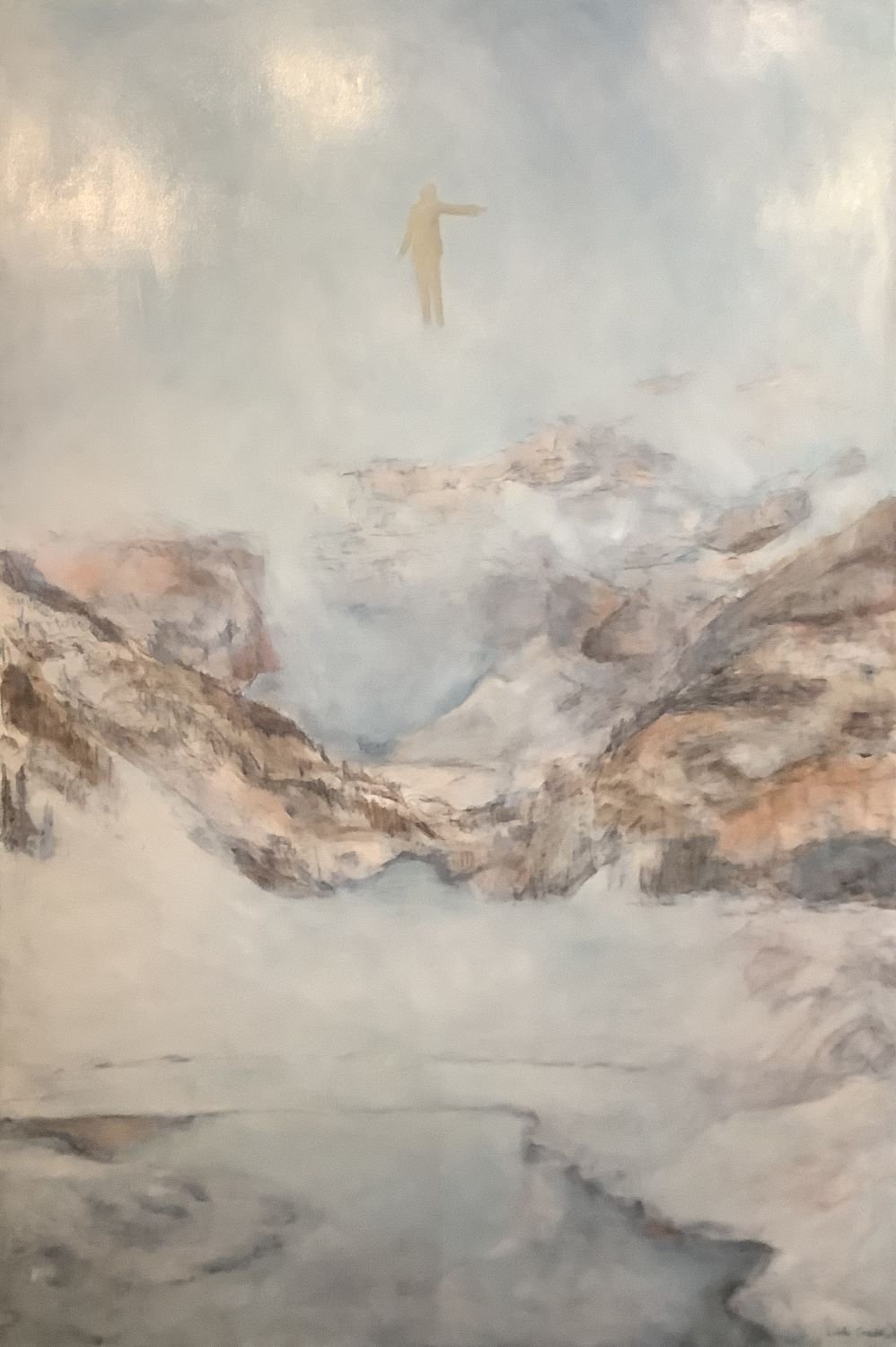
Levitas: Tributary, Lake Louise, 2023, oil and oil pencil on birch panel, 60 x 40 inches (152.5 x 102 cm), $5000.00 Cdn

Levitas: Woman Rising, Columbia Ice Fields, oil & pencil on birch, 36 x 60 inches (91.5 x 152.5 cm), $4800.00 Cdn...LEVITAS - (Latin) meaning levity or lightness...The experience of levitation exists in our dreams and all dreams are based upon our past experiences. A desire to be “free” or to transcend the bounds of gravity also results in our spiritual aspirations and changes the shape of our memories.
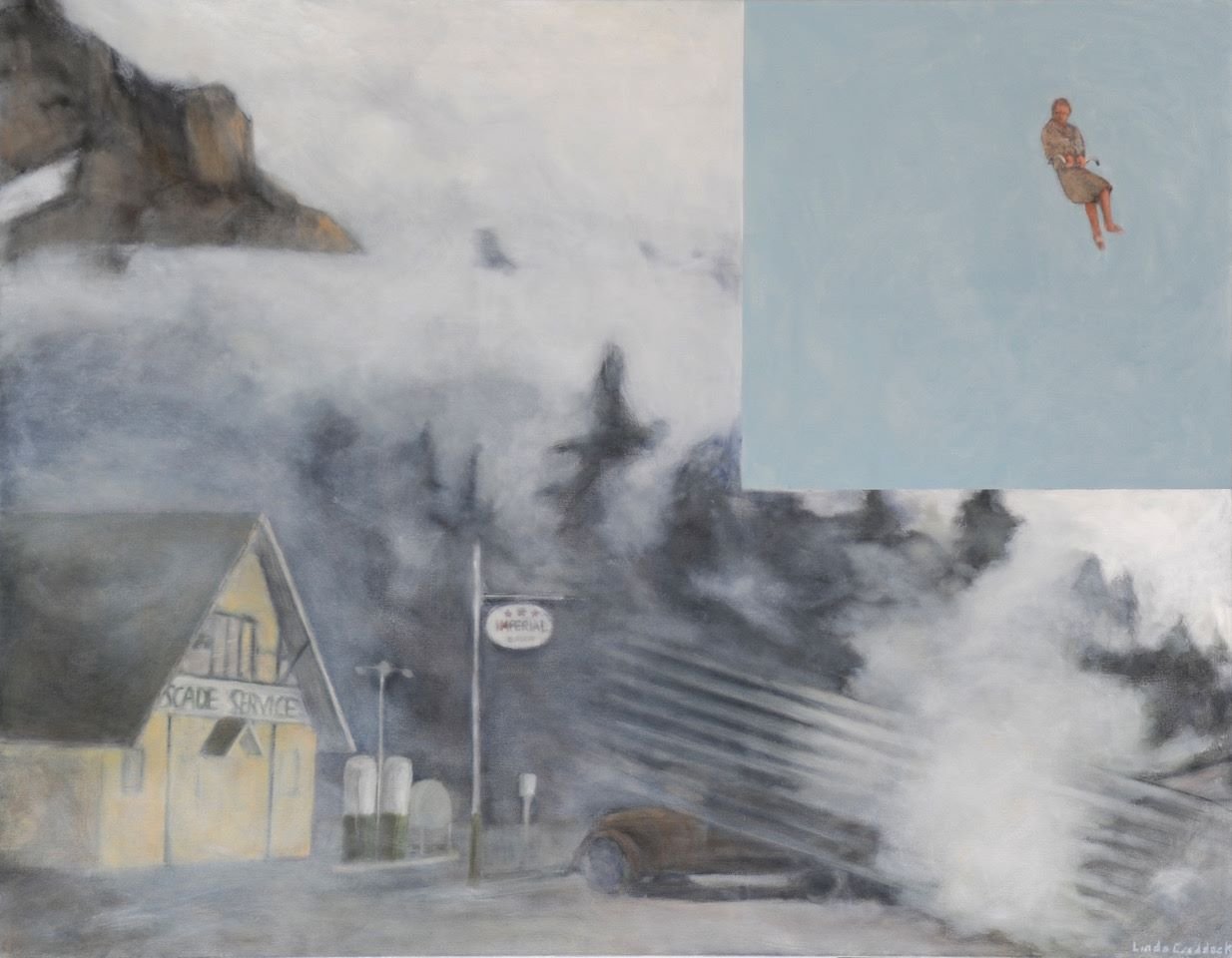
Levitas: Light Incident Cascade Service, Banff Avenue, oil & pencil on birch, 42x54 inches (107x137 cm), $4800.00 Cdn...LEVITAS - (Latin) meaning levity or lightness...The experience of levitation exists in our dreams and all dreams are based upon our past experiences. A desire to be “free” or to transcend the bounds of gravity also results in our spiritual aspirations and changes the shape of our memories.
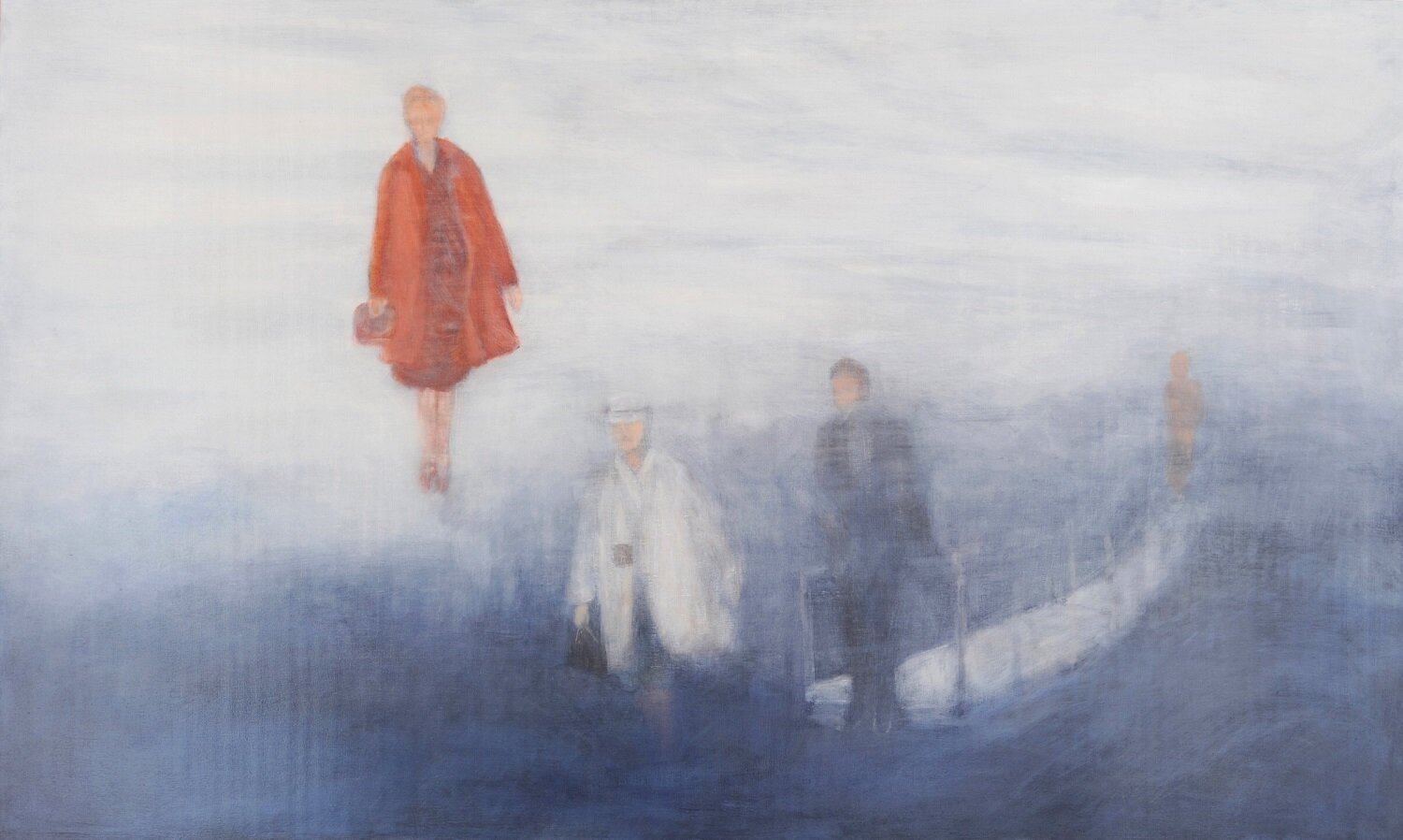
Levitas: Winter Bridge, Columbia Icefields, oil & pencil on birch, 36 x 60 inches (91.5 x 152.5 cm), $4800.00 Cdn...LEVITAS - (Latin) meaning levity or lightness...The experience of levitation exists in our dreams and all dreams are based upon our past experiences. A desire to be “free” or to transcend the bounds of gravity also results in our spiritual aspirations and changes the shape of our memories.
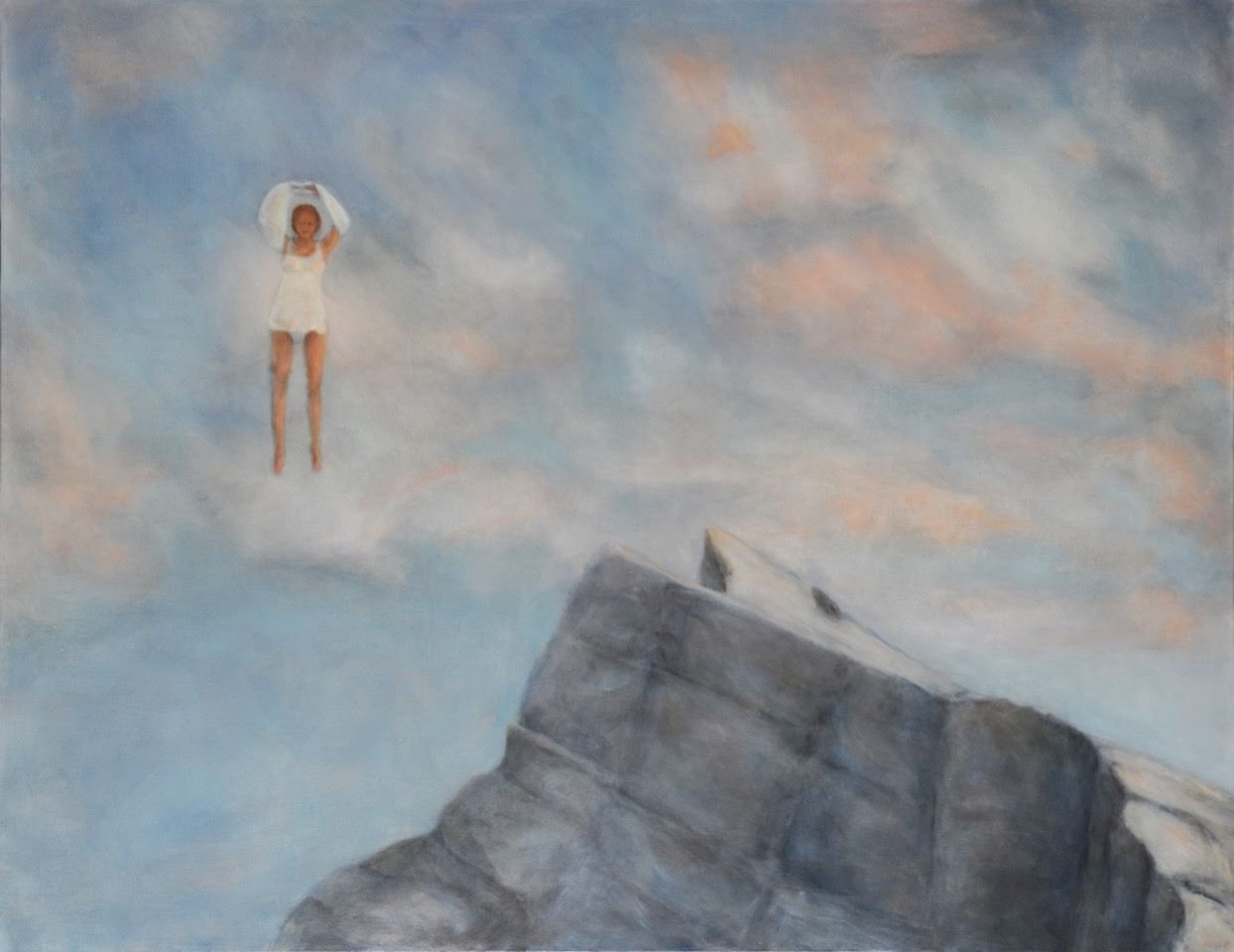
Levitas: Woman With Sweater, Late Day Sun Over Mt. Rundle, oil & pencil on canvas, 42x54 inches (107x137 cm), $4800.00 Cdn...LEVITAS - (Latin) meaning levity or lightness...The experience of levitation exists in our dreams and all dreams are based upon our past experiences. A desire to be “free” or to transcend the bounds of gravity also results in our spiritual aspirations and changes the shape of our memories.
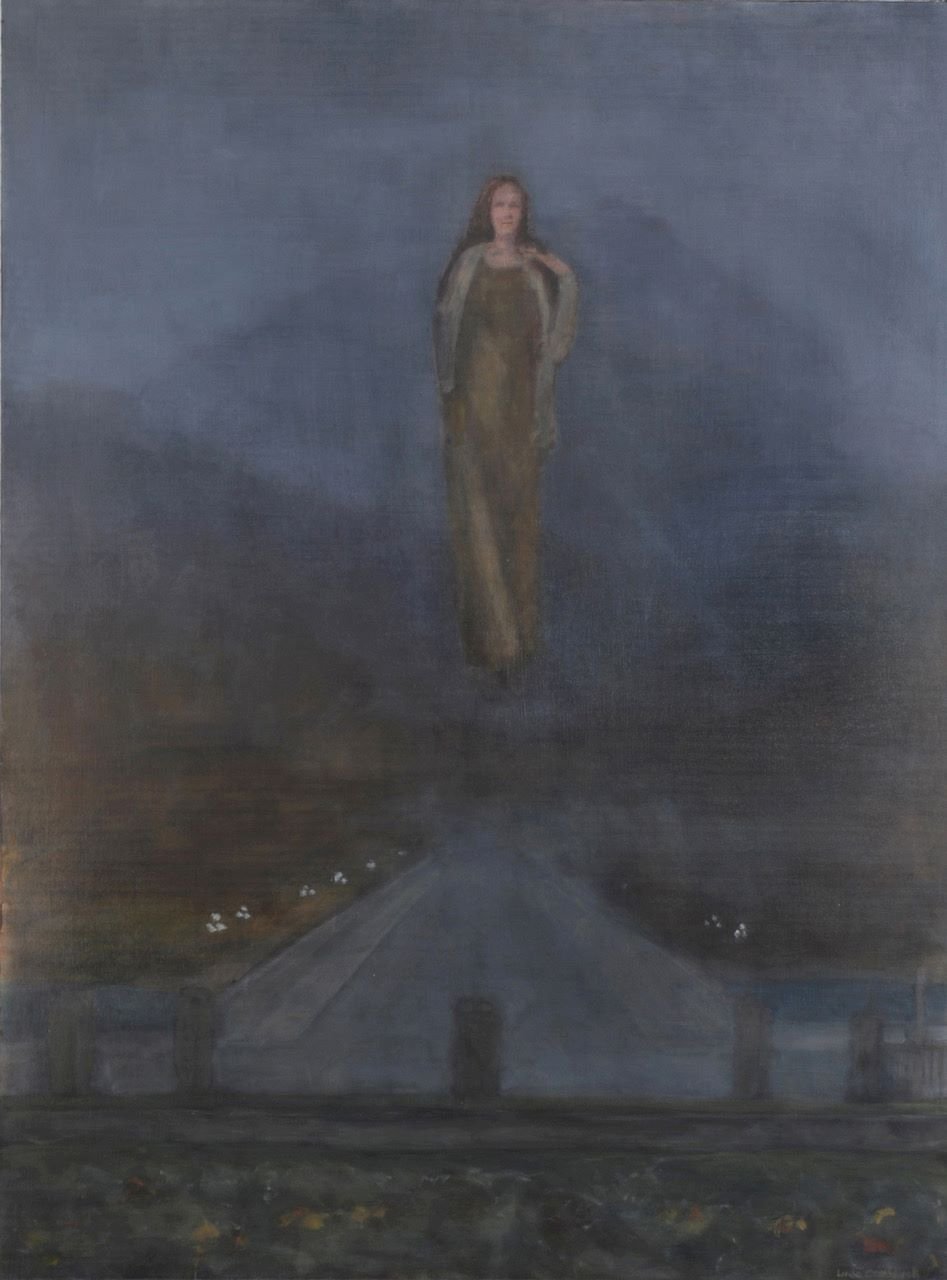
Levitas: Banff Avenue Madonna, oil & pencil on birch, 48 x 36 inches (122 x 91.5 cm), $4200.00 Cdn...LEVITAS - (Latin) meaning levity or lightness...The experience of levitation exists in our dreams and all dreams are based upon our past experiences. A desire to be “free” or to transcend the bounds of gravity also results in our spiritual aspirations and changes the shape of our memories.
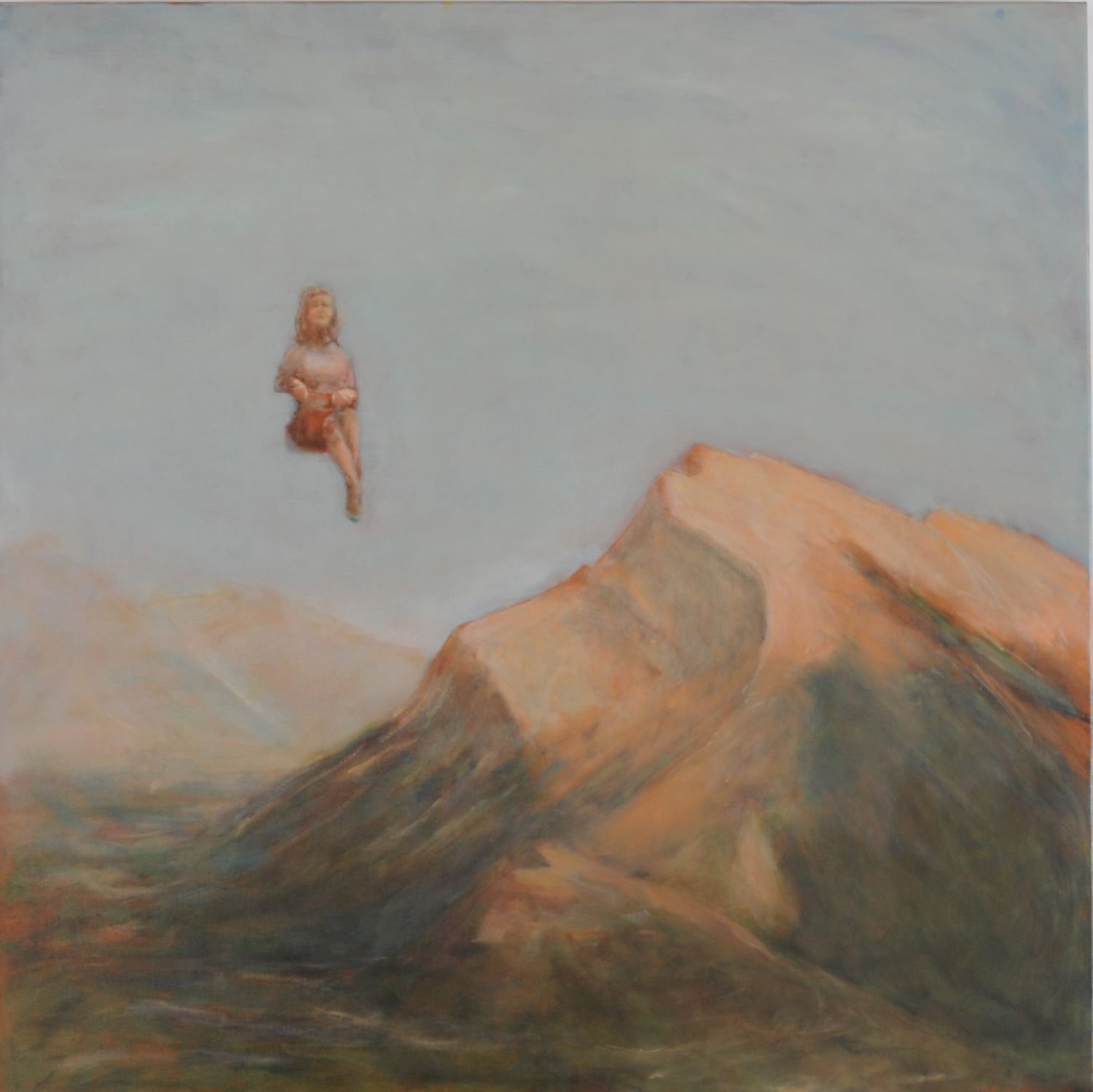
Levitas: Marilyn Over Mt. Rundle, oil & pencil on canvas, 40x40 inches (102x102 cm), $4000.00 Cdn...LEVITAS - (Latin) meaning levity or lightness...The experience of levitation exists in our dreams and all dreams are based upon our past experiences. A desire to be “free” or to transcend the bounds of gravity also results in our spiritual aspirations and changes the shape of our memories.

Levitas: Key - Bow Falls, Banff, Alberta, oil & pencil on birch, 36x36 inches (91.5 x 91.5 cm), $3600.00 Cdn...LEVITAS - (Latin) meaning levity or lightness...The experience of levitation exists in our dreams and all dreams are based upon our past experiences. A desire to be “free” or to transcend the bounds of gravity also results in our spiritual aspirations and changes the shape of our memories.
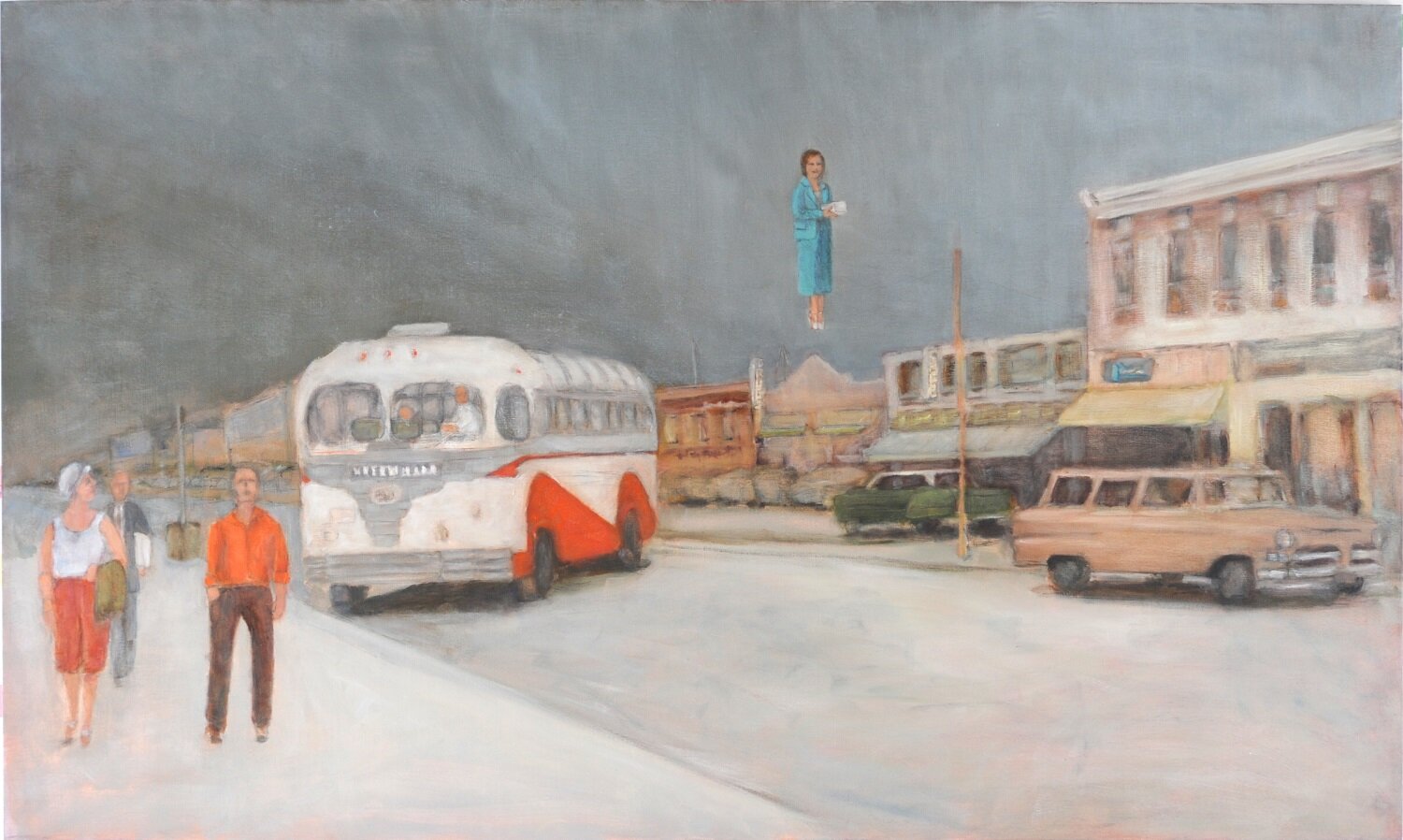
Levitas: Mary's Parcel, Greyline Bus On Banff Avenue, oil & pencil on birch, 36 x 60 inches (91.5 x 152.5 cm), $4800.00 Cdn...LEVITAS - (Latin) meaning levity or lightness...The experience of levitation exists in our dreams and all dreams are based upon our past experiences. A desire to be “free” or to transcend the bounds of gravity also results in our spiritual aspirations and changes the shape of our memories.
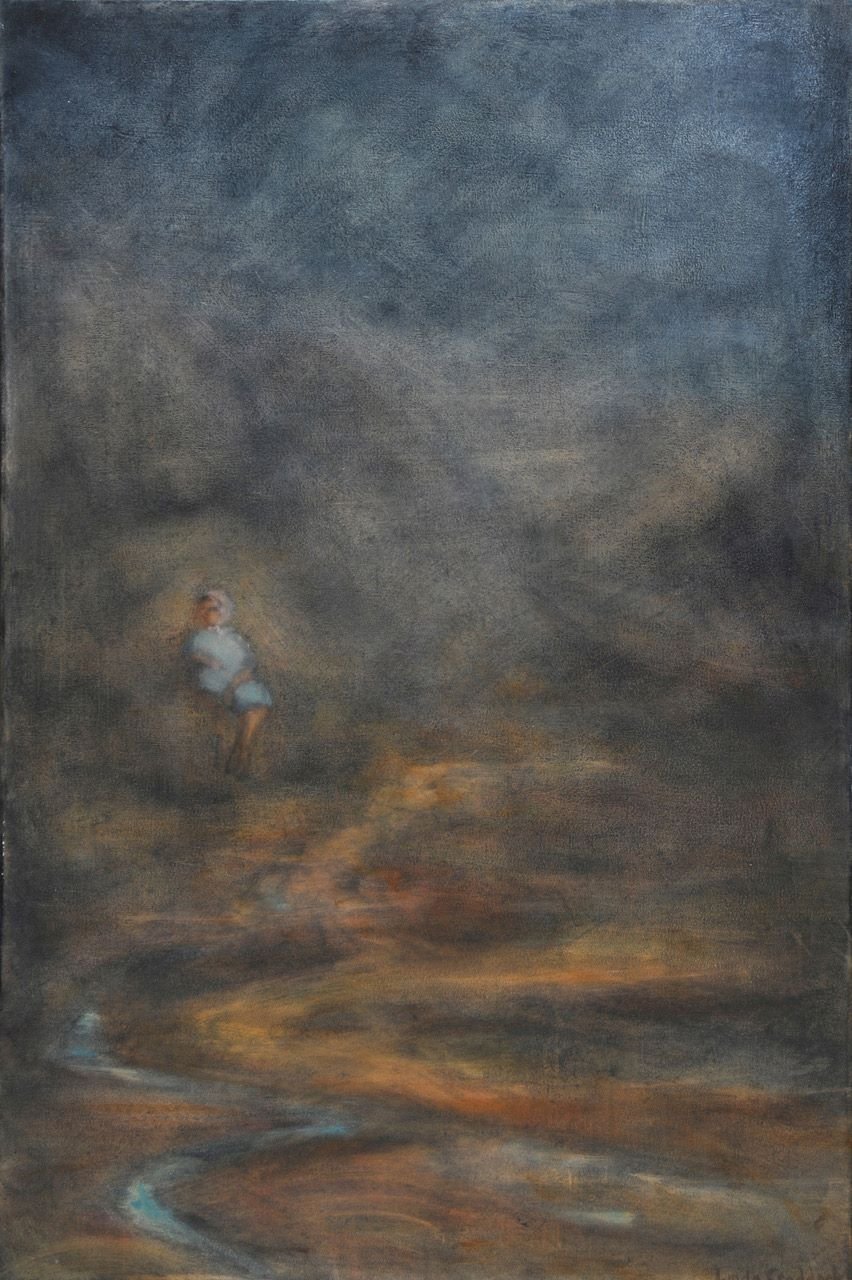
Levitas: Last Look, oil on canvas, 36x24 inches (91.5 x 61 cm), $3000.00 Cdn...LEVITAS - (Latin) meaning levity or lightness...The experience of levitation exists in our dreams and all dreams are based upon our past experiences. A desire to be “free” or to transcend the bounds of gravity also results in our spiritual aspirations and changes the shape of our memories.
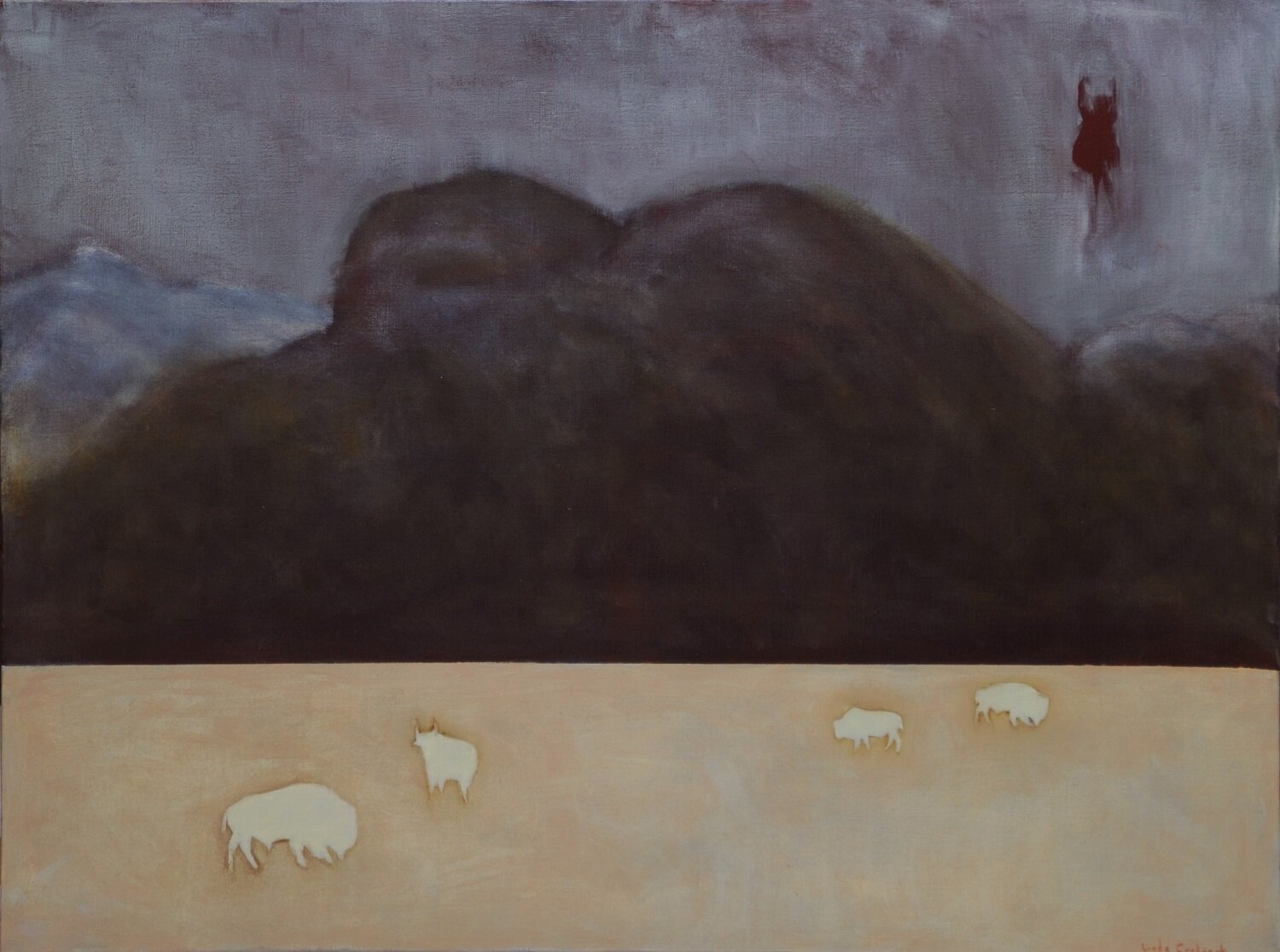
Levitas: Waiting For The Buffalo, Buffalo Mountain, oil on linen, 36 x 48 inches (91.5 x 122 cm), $4200.00 Cdn...LEVITAS - (Latin) meaning levity or lightness...The experience of levitation exists in our dreams and all dreams are based upon our past experiences. A desire to be “free” or to transcend the bounds of gravity also results in our spiritual aspirations and changes the shape of our memories.
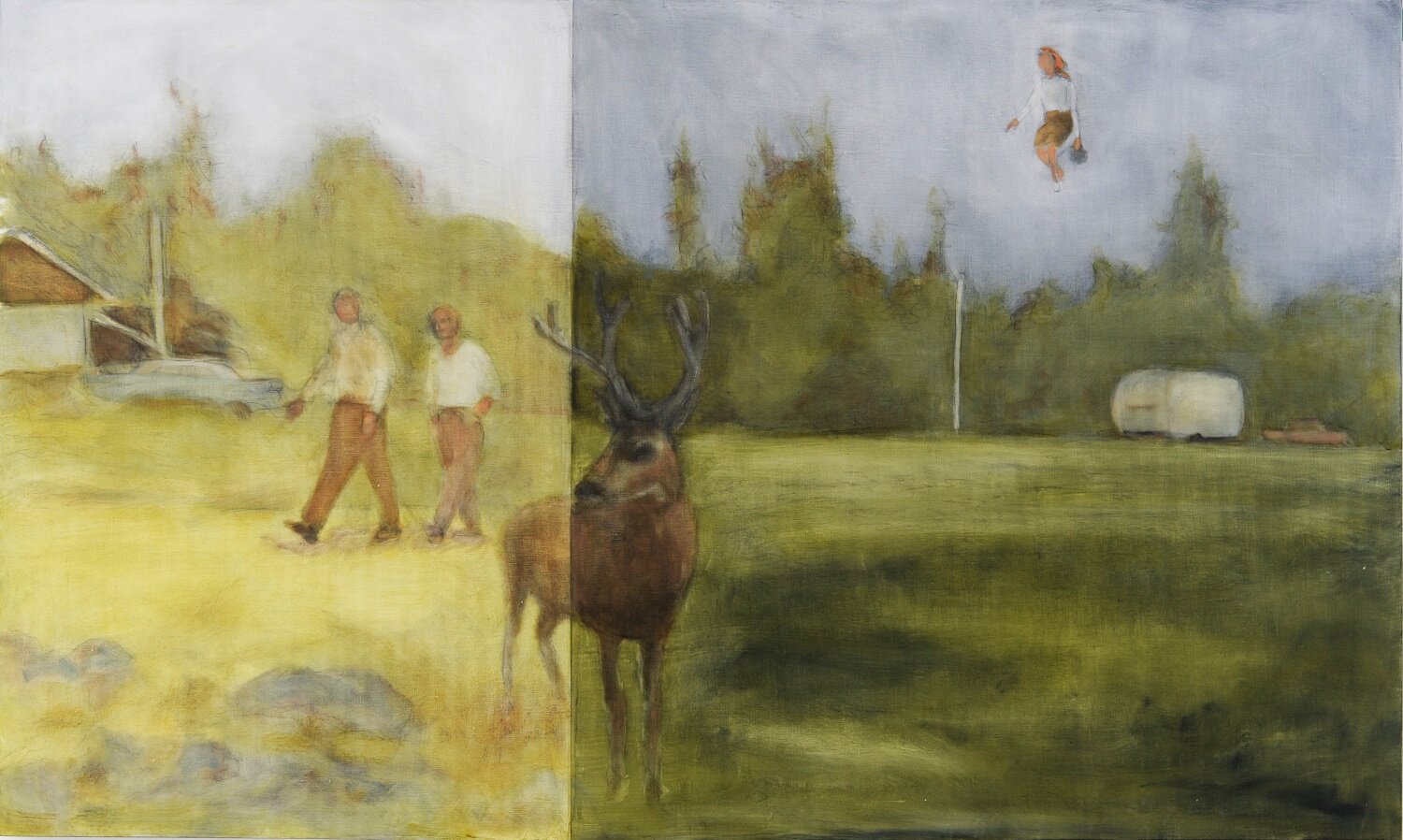
Levitas: White Tail Deer, Tunnel Mountain Campground, oil & pencil on birch, 36 x 60 inches (91.5 x 152.5 cm), $4800.00 Cdn...LEVITAS - (Latin) meaning levity or lightness...The experience of levitation exists in our dreams and all dreams are based upon our past experiences. A desire to be “free” or to transcend the bounds of gravity also results in our spiritual aspirations and changes the shape of our memories.
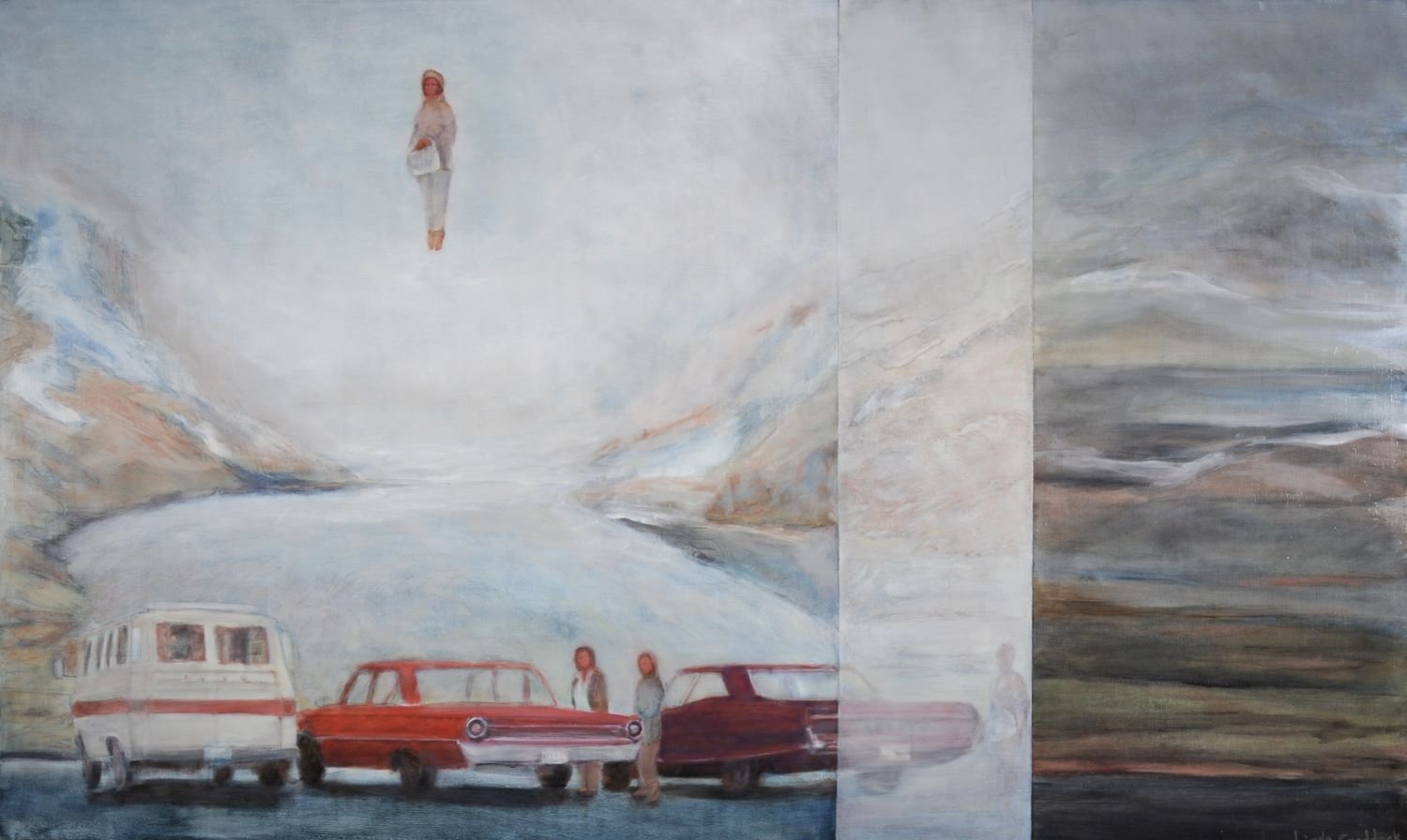
Levitas: the 1964 Columbia Icefields, oil & pencil on birch, 36 x 60 inches (91.5 x 152.5 cm), $4800.00 Cdn...LEVITAS - (Latin) meaning levity or lightness...The experience of levitation exists in our dreams and all dreams are based upon our past experiences. A desire to be “free” or to transcend the bounds of gravity also results in our spiritual aspirations and changes the shape of our memories. “These are paintings, in part, of an enchantment with the mountain landscape that transcends the literal monumentalism of rock. Gorgeous (Myrna Kostash, Dec 2022).”
Levitas
Rise to the occasion, transcend the everyday to explore the inner world of time passing and people returning with Linda Craddock's Levitas Series.
I have a heartfelt appreciation of Banff National Park and its position within the collective psyche of all Canadians.
Initially, I chose to reference the popular Gondola rides that carried tourists to the summit of Sulfur Mountain and Mount Norquay. I ventured back in time to the open chair gondola that existed in the 1950's. I drew a female form being mechanically lifted but decided to erase the wires that held the chair, and then I erased the chair, as there was no need to depict the device itself. She ascended, unrestrained. At that moment, my exploration took on an added dimension.
The Gondola is a wonderful metaphor for the spiritual process of “Ascension.” Such aspiration demands an upward force, a motivation to counteract the gravity of life, and here the force is simply that of volition. The downward force of gravity is referenced in the mass provided by the imagery of mountains. The mountain ranges surround and protect, as does the boundary of the National Park itself.
Somehow the Park boundary offers me the security I need to anticipate ascension. As in a lucid dream, all is possible unless a sharp sound or a freakish action interrupt. I require that protected space to both slip through time and to ascend.
A man in a suit walks along Banff Avenue while a woman, my aunt circa 1940 rises overhead. Buildings that have been torn down return. Cars and buses reflect the 1950's.
I drift away in the mist over the lake observed by my grandmother, who perhaps sees her own image and not me, floating.
I spend weeks planning each painting. I choose a location and then I ponder: Who will rise to the occasion, rise to the top, rise to avoid, rise to transcend? Does she rise to escape or to discover? I wait for someone to appear. My mother, my aunt, grandmother, a stranger. Myself. Only one painting depicts a man who passes by me, midair.
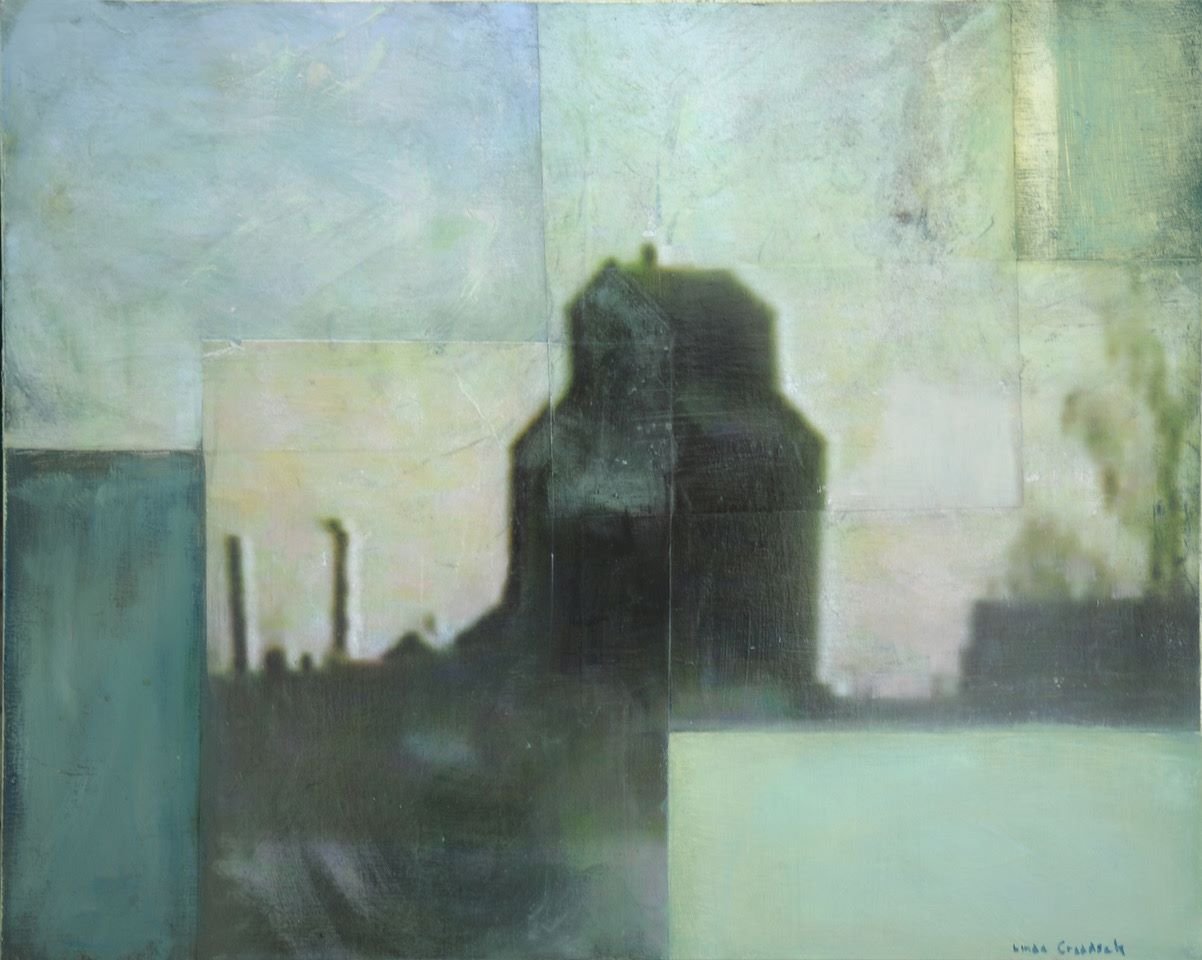
Hometown Dreams: Movie Stills: Grain 1, oil on birch, 16x20 inches (41x51 cm), $1440.00 Cdn (ask about pricing on the triptych)
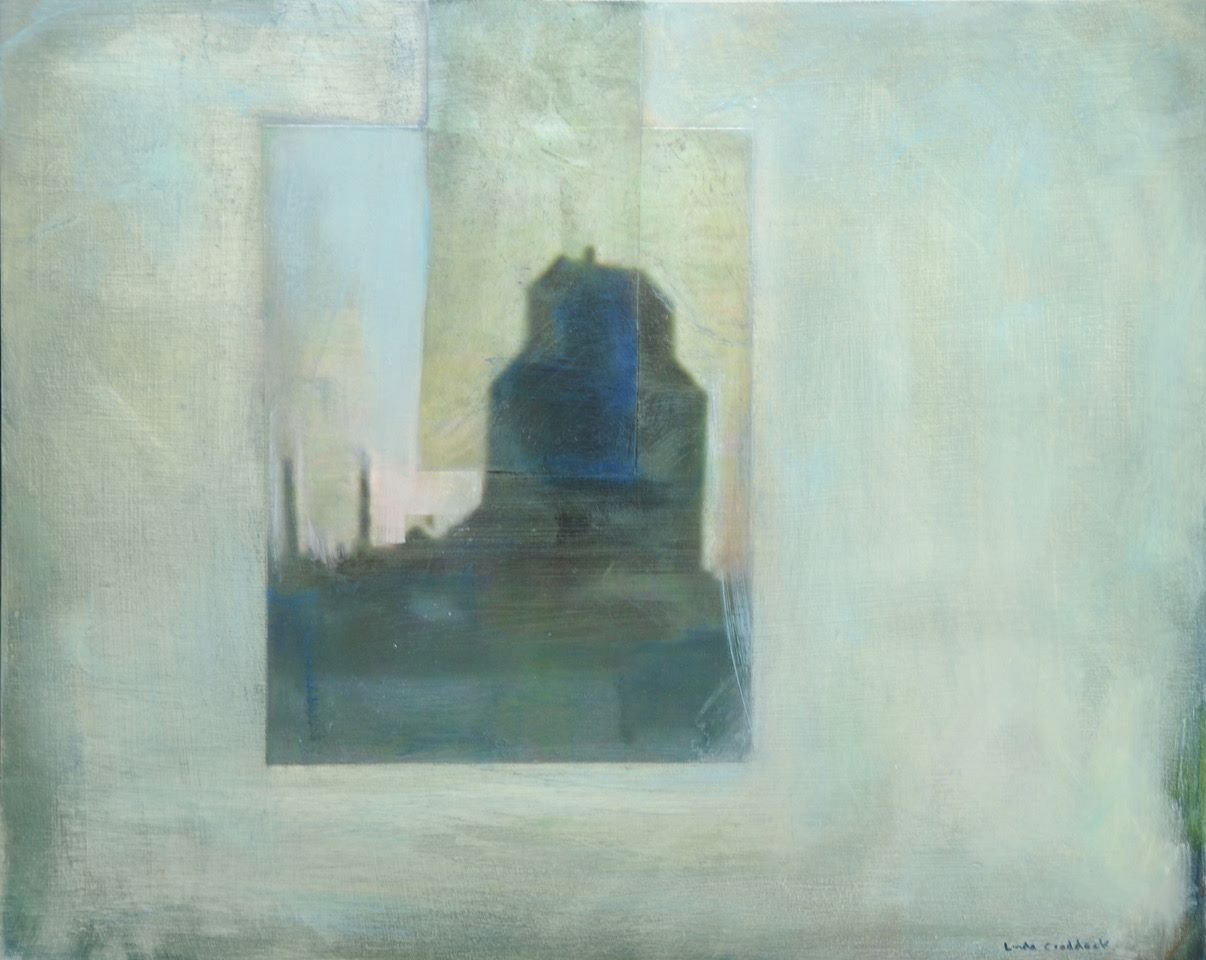
Hometown Dreams: Movie Stills: Grain 2, oil on birch, 16x20 inches (41x51 cm), $1440.00 Cdn (ask about pricing on the triptych)
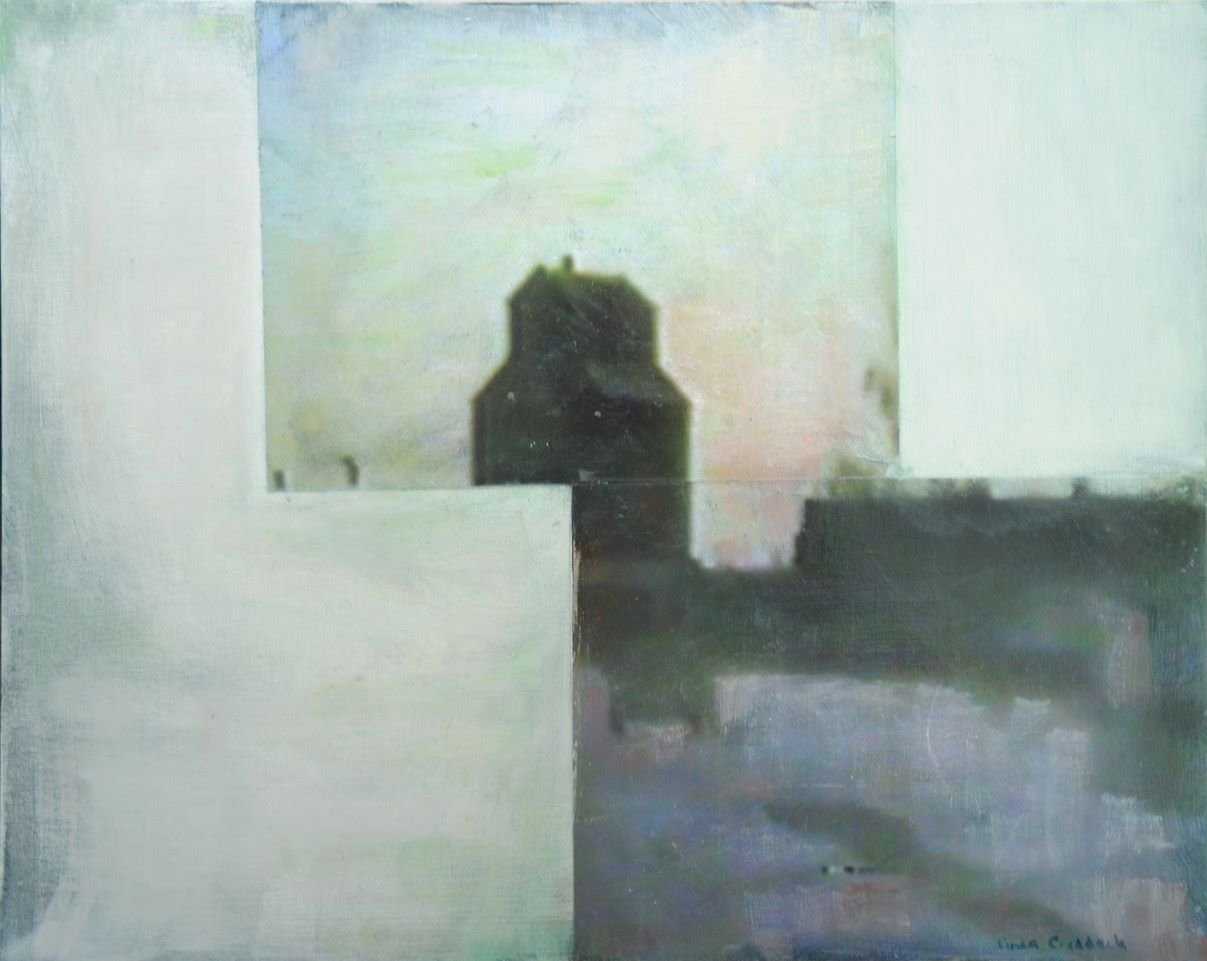
Hometown Dreams: Movie Stills: Grain 3, oil on birch, 16x20 inches (41x51 cm), $1440.00 Cdn (ask about pricing on the triptych)
Hometown Dreams:
Everything changes. Storms bring thunder, lightening, rain. Winter ice thaws. Wind wears down, breaks down. What my ancestors, generations of prairie dwellers, built has disappeared by the force of its very environment and choices made by subsequent generations. Perhaps change is a reprieve, maybe liberation from what has passed. Those who remain on the land or in the old towns carry on and move into a new economic future but I can only see the ghost image and debris of what has been. All is adrift, falling or ascending. I walk down Main Street and experience what is no longer real.
I recall places, buildings, streets, farm houses, elevators, mostly gone. No longer hidden but no longer in existence. The atmosphere is of change, stormy skies over fields. Buildings on Main Street. Old sheds, and tiny homes that housed the old people after they left the farm. The grain elevator, long gone.
Canyon Series (Marble / Johnston):
Water, at the time of the spring thaw, has many transitional stages - from ice to liquid to mist. This capacity for metamorphosis has autobiographical meaning and is related to the inevitable cycles of life, and cycles within life. The seasons are internal as well as external. The phenomenon of water as it rushes over rock and slowly etches its way into that vertical landscape, reminds me to free myself from the machination of the everyday.
I work with the peripheral light on the canyon water and I manipulate the paint to merge and transform subject and object. What remains is a mirage and as such, a more profound, and personal art form.
I manipulate digital video, still photography, and acrylic paint as the source material for the collage elements on birch board. The final surface handling consists of oil paint and oil glazes.
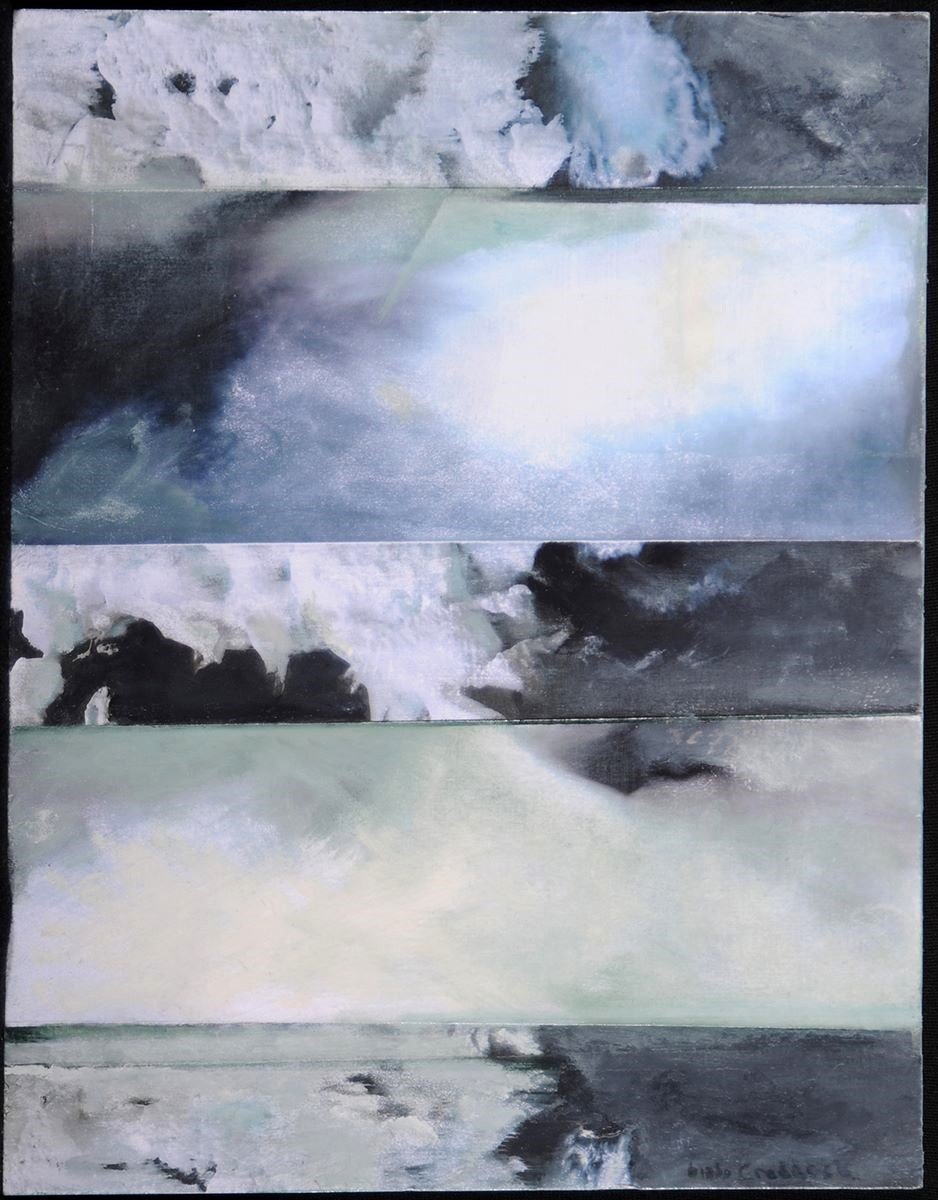
Canyon Series (Marble / Johnston) #23, 2023, photo based mixed media / birch panel, 14x11 inches (35.5 x 28 cm), $550.00 Cdn.

Canyon Series (Marble / Johnston) #24, 2023, photo based mixed media / birch panel, 14x11 inches (35.5 x 28 cm), $550.00 Cdn.
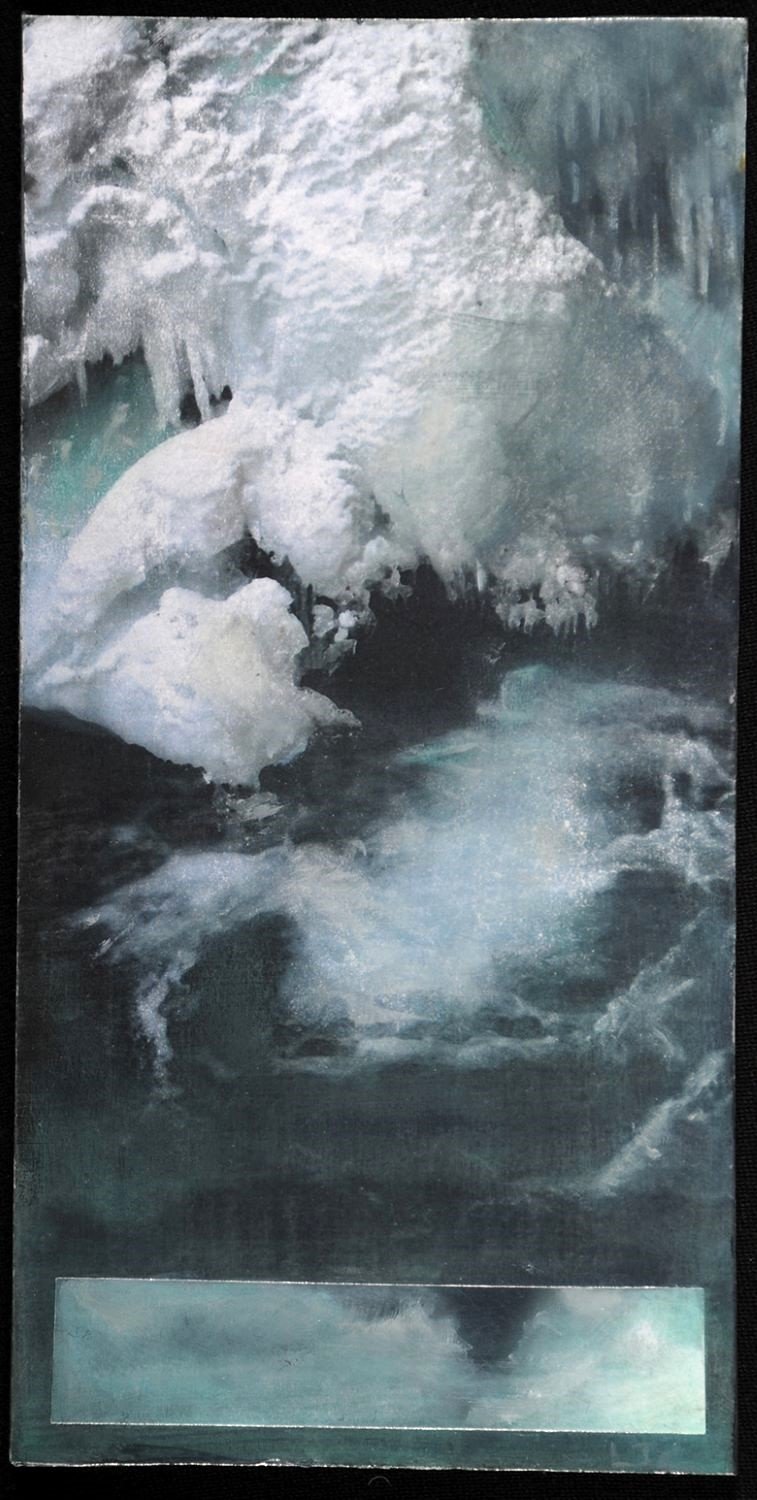
Canyon Series (Marble / Johnston) #5, 2023, photo based mixed media / birch panel, 12x6 inches (30.5 x 15 cm), $375.00 Cdn.
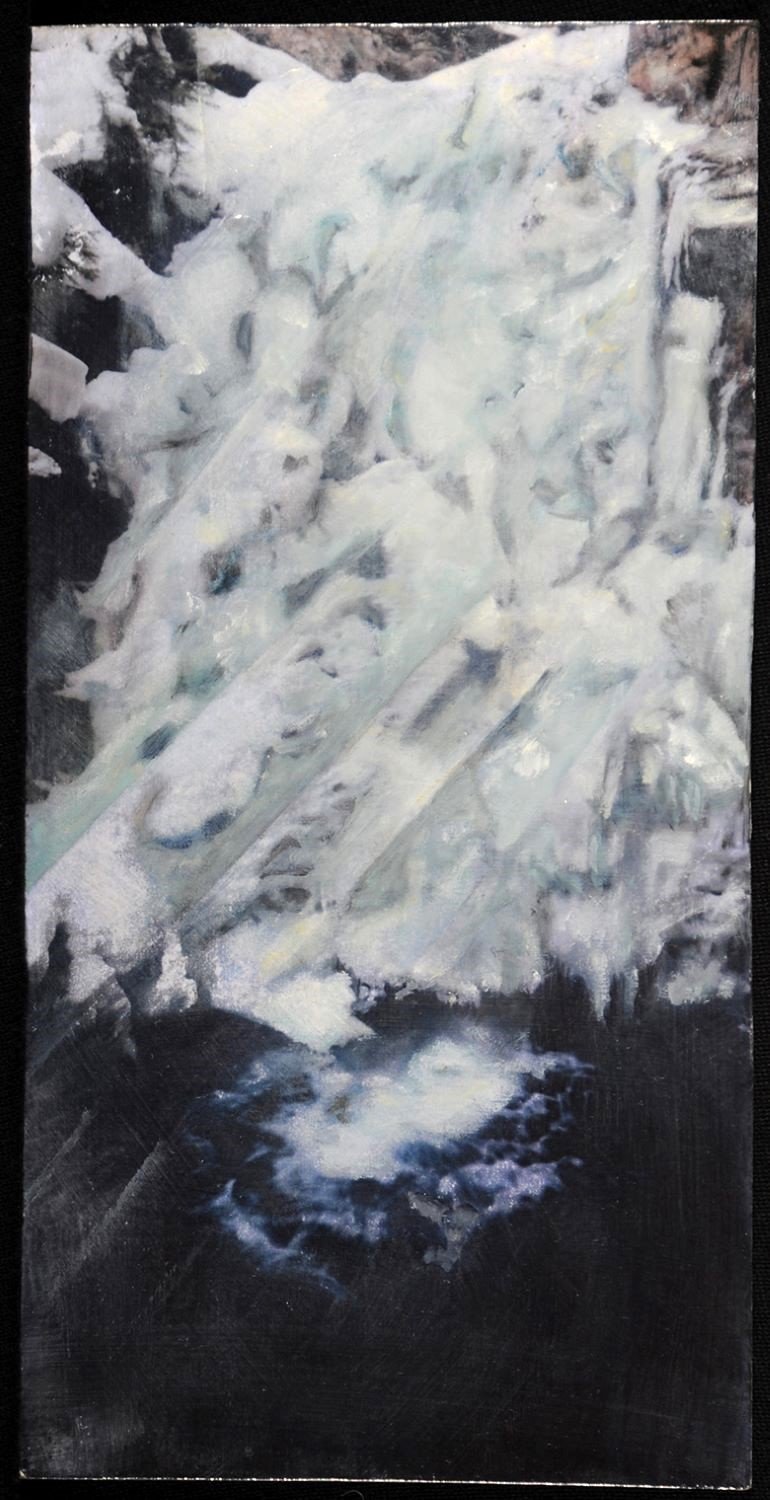
Canyon Series (Marble / Johnston) #6, 2023, photo based mixed media / birch panel, 12x6 inches (30.5 x 15 cm), $375.00 Cdn.
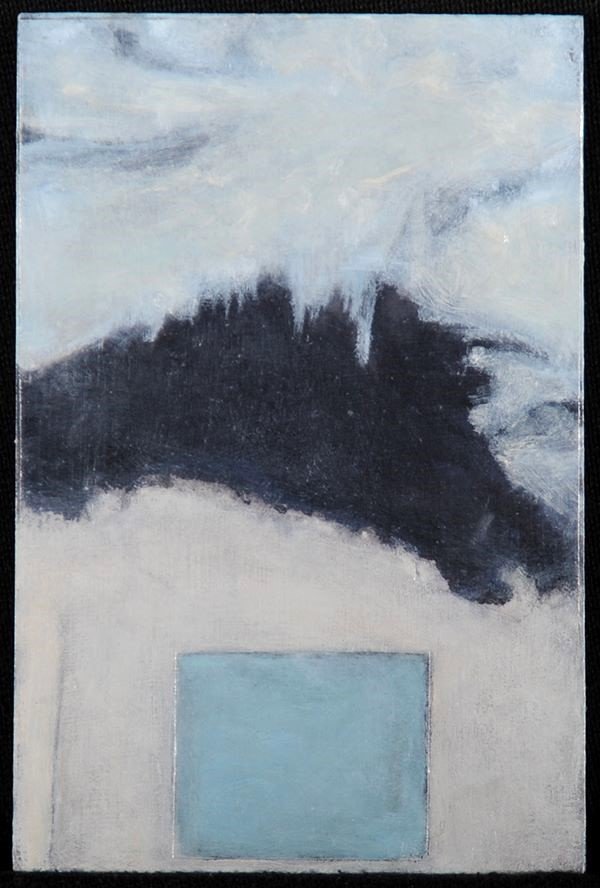
Canyon Series (Marble / Johnston) #15, 2023, photo based mixed media / birch panel, 6x4 inches (15x10 cm), $200.00 Cdn.
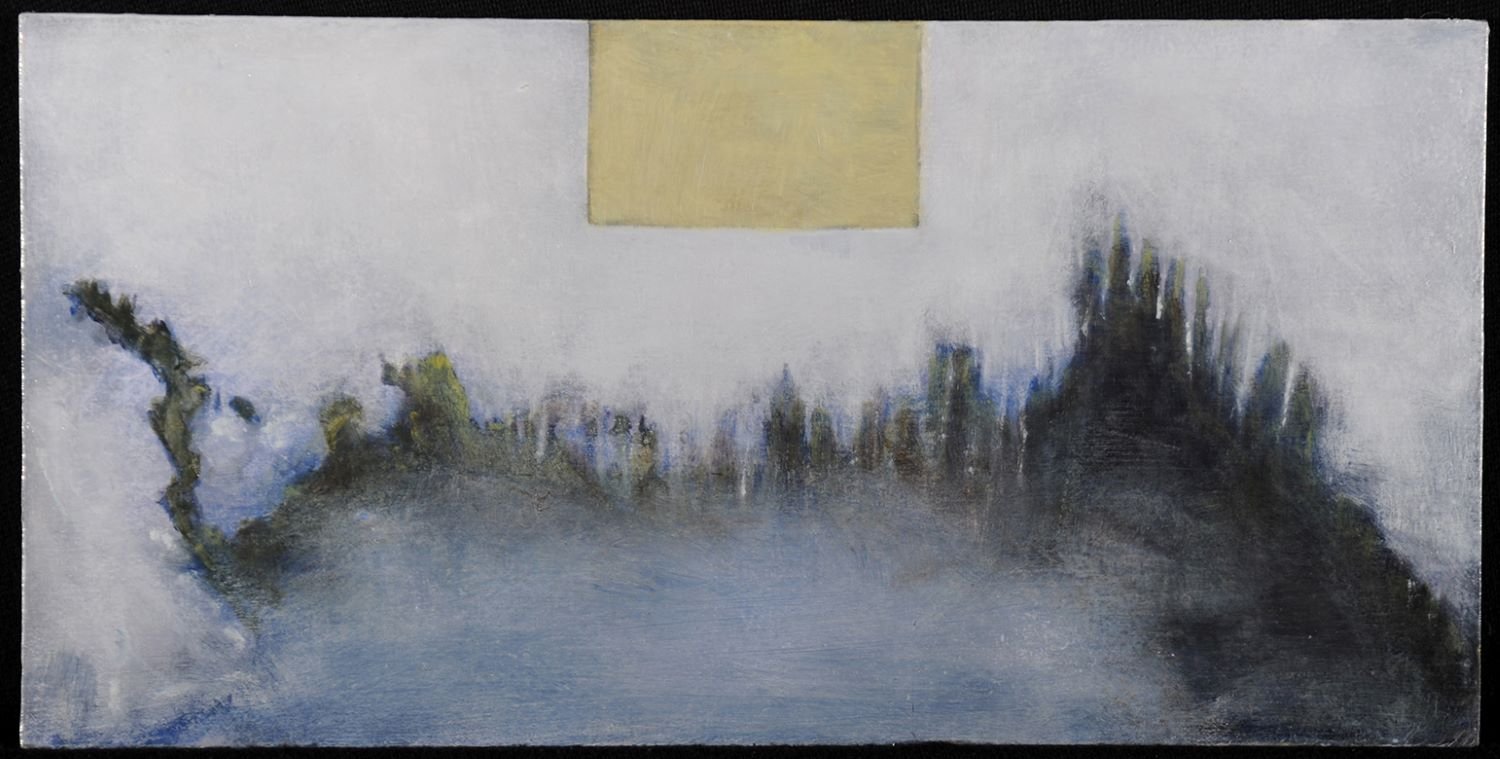
Canyon Series (Marble / Johnston) #8, 2023, photo based mixed media / birch panel, 6x12 inches (15x30.5 cm), $375.00 Cdn.
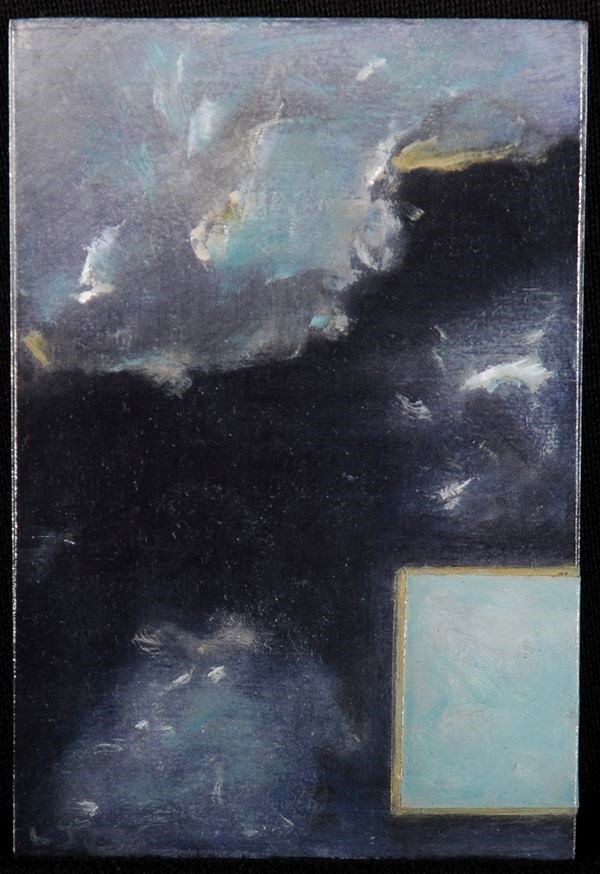
Canyon Series (Marble / Johnston) #18, 2023, photo based mixed media / birch panel, 6x4 inches (15x10 cm), $200.00 Cdn.
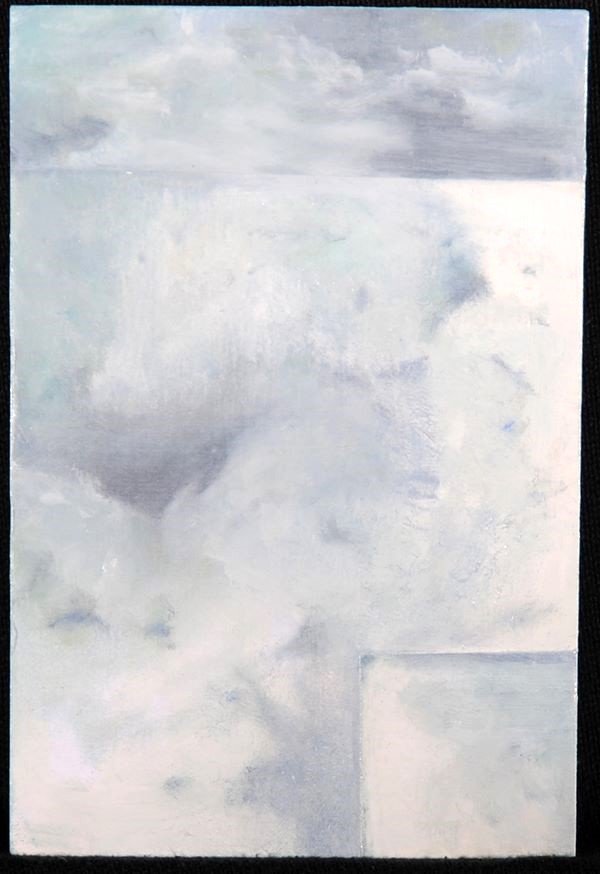
Canyon Series (Marble / Johnston) #21, 2023, photo based mixed media / birch panel, 6x4 inches (15x10 cm), $200.00 Cdn.

Canyon Series (Marble / Johnston) #7, 2023, photo based mixed media / birch panel, 6x12 inches (15x30.5 cm), $375.00 Cdn.
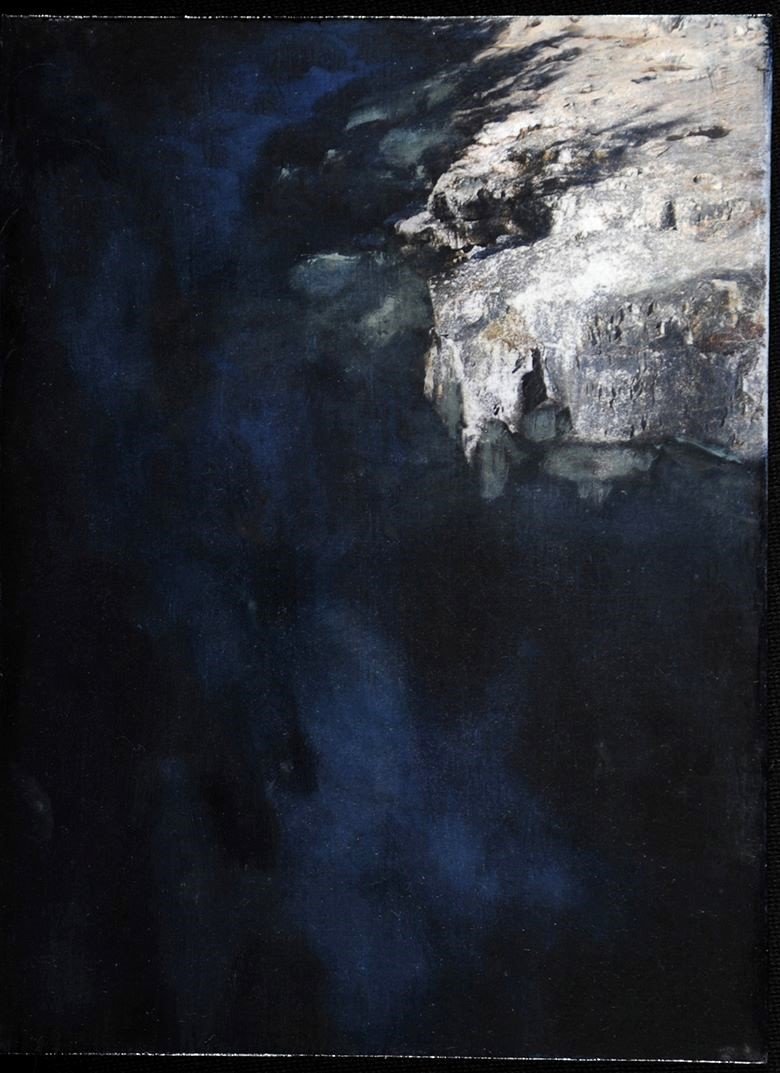
Canyon Series (Marble / Johnston) #4, 2023, photo based mixed media / birch panel, 8x6 inches (20.5 x 15 cm), $350.00 Cdn.

Canyon Series (Marble / Johnston) #1, 2023, photo based mixed media / birch panel, 8x6 inches (20.5 x 15 cm), $350.00 Cdn.
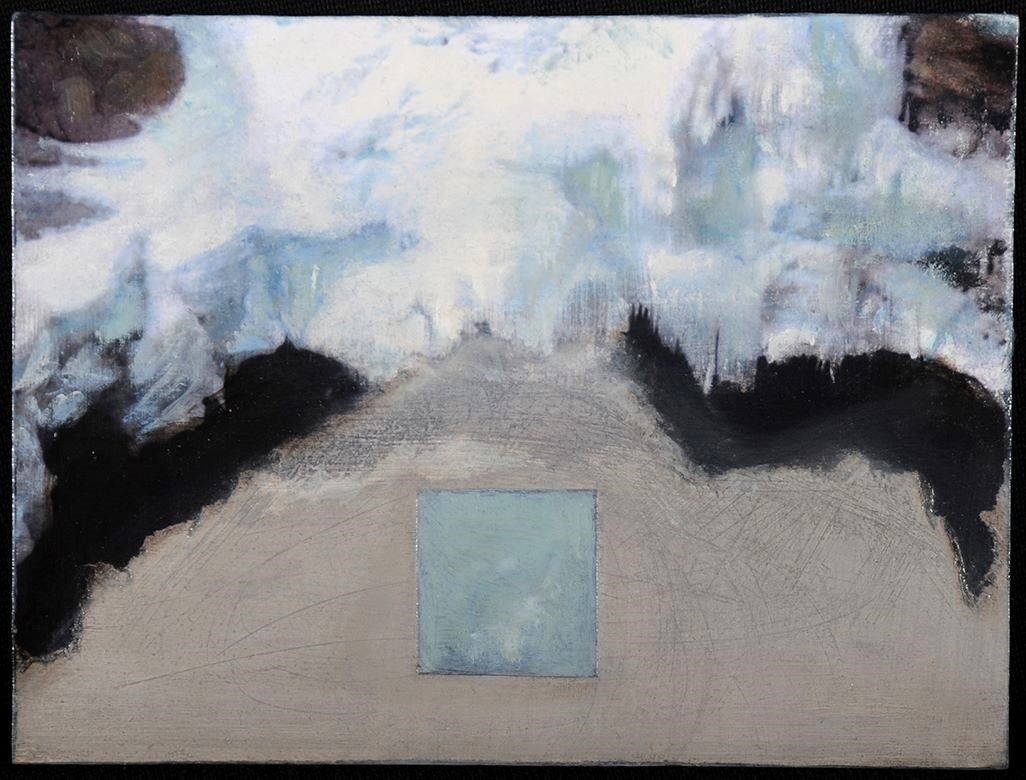
Canyon Series (Marble / Johnston) #2, 2023, photo based mixed media / birch panel, 6x8 inches (15x20.5 cm), $350.00 Cdn.
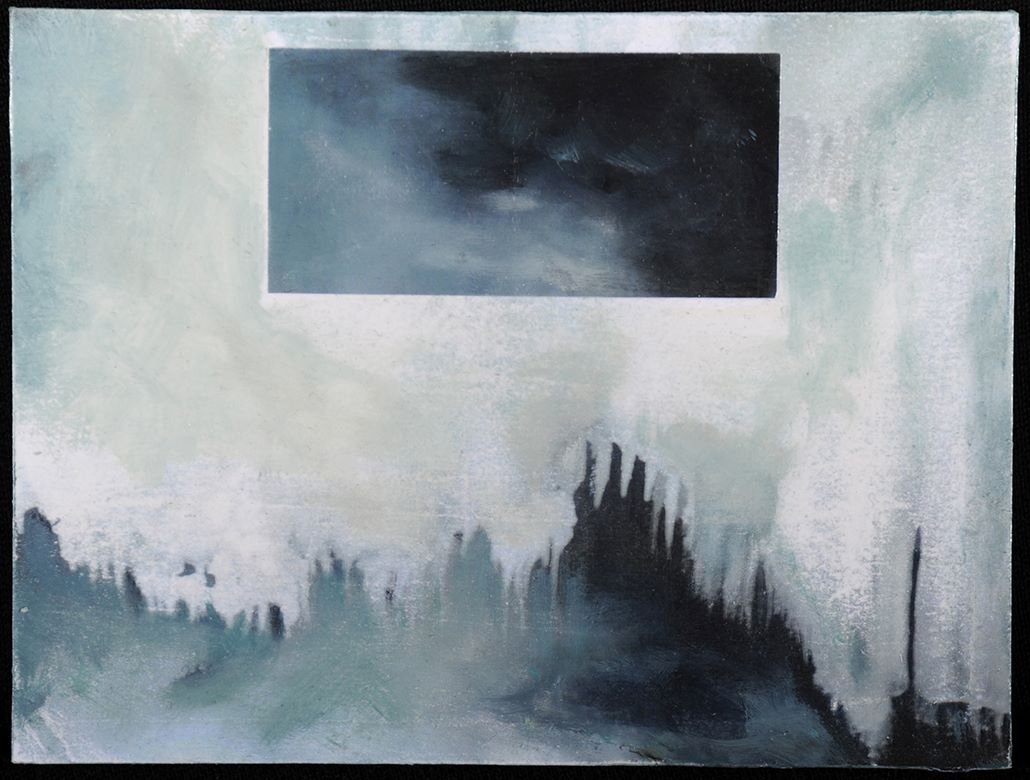
Canyon Series (Marble / Johnston) #3, 2023, photo based mixed media / birch panel, 6x8 inches (15x20.5 cm), $350.00 Cdn.
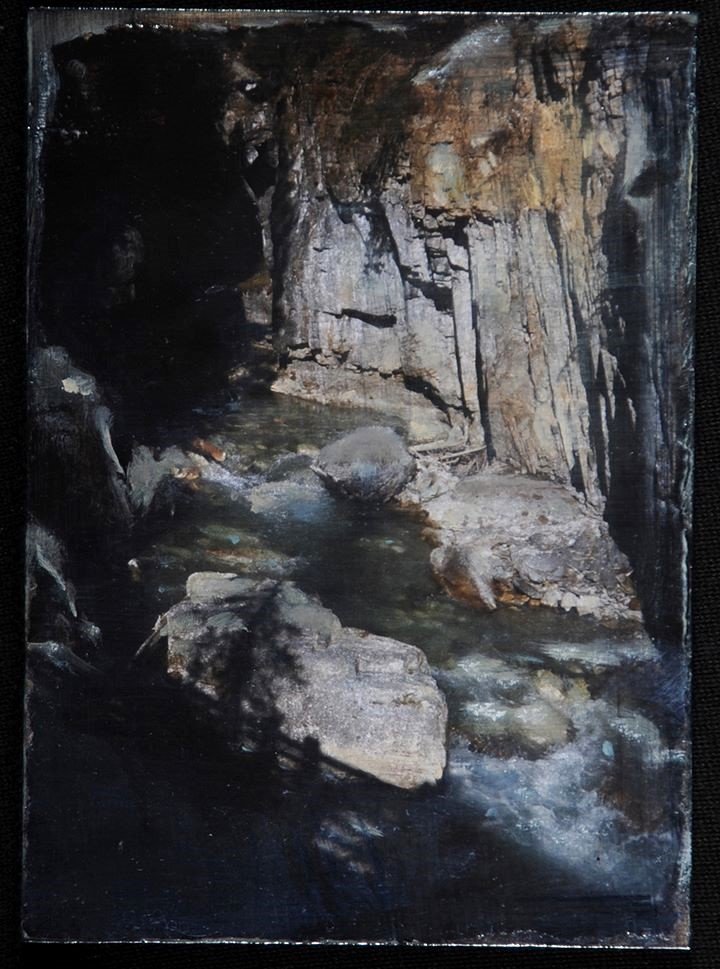
Canyon Series (Marble / Johnston) #10, 2023, photo based mixed media / birch panel, 7x5 inches (18x13 cm), $300.00 Cdn.
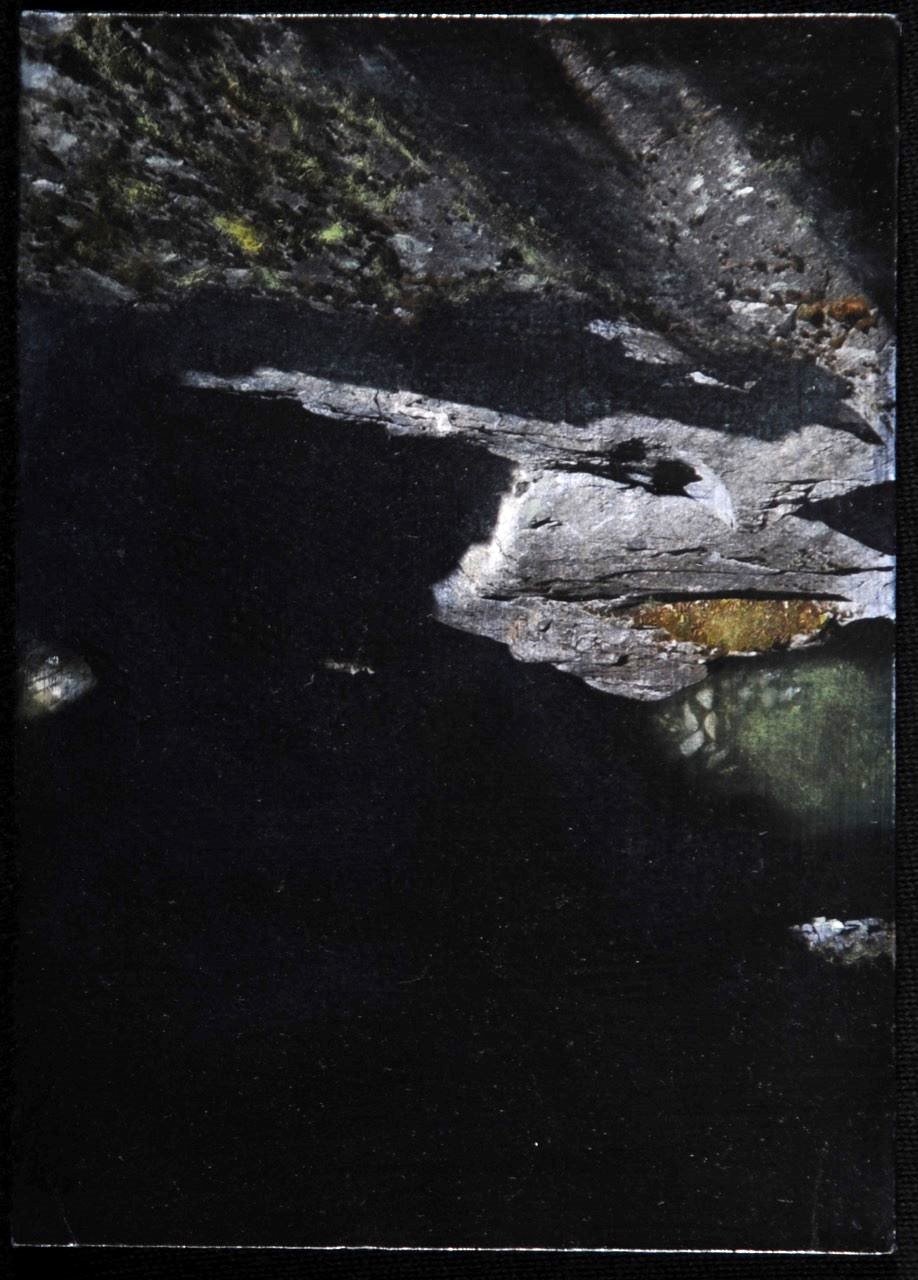
Canyon Series (Marble / Johnston) #11, 2023, photo based mixed media / birch panel, 7x5 inches (18x13 cm), $300.00 Cdn.
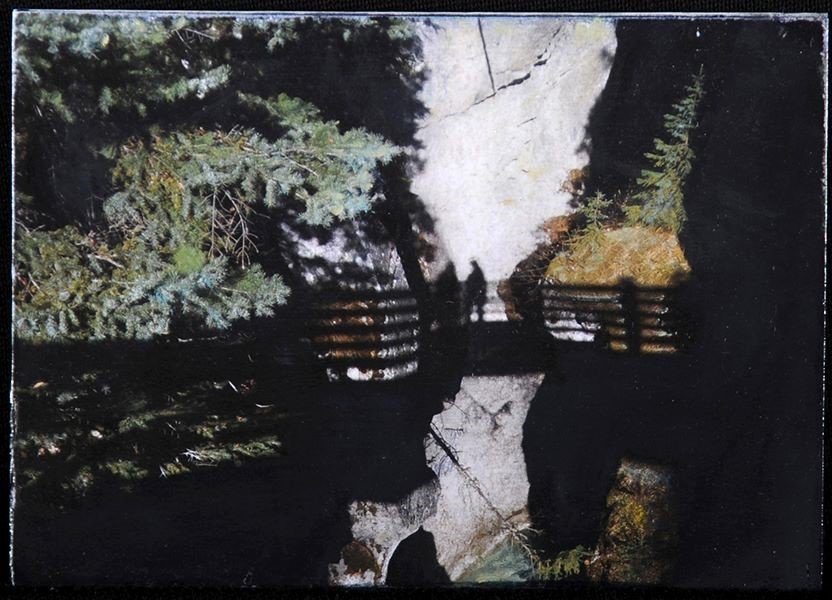
Canyon Series (Marble / Johnston) #13, 2023, photo based mixed media / birch panel, 5x7 inches (13x18 cm), $300.00 Cdn.

Canyon Series (Marble / Johnston) #14, 2023, photo based mixed media / birch panel, 5x7 inches (13x18 cm), $300.00 Cdn.
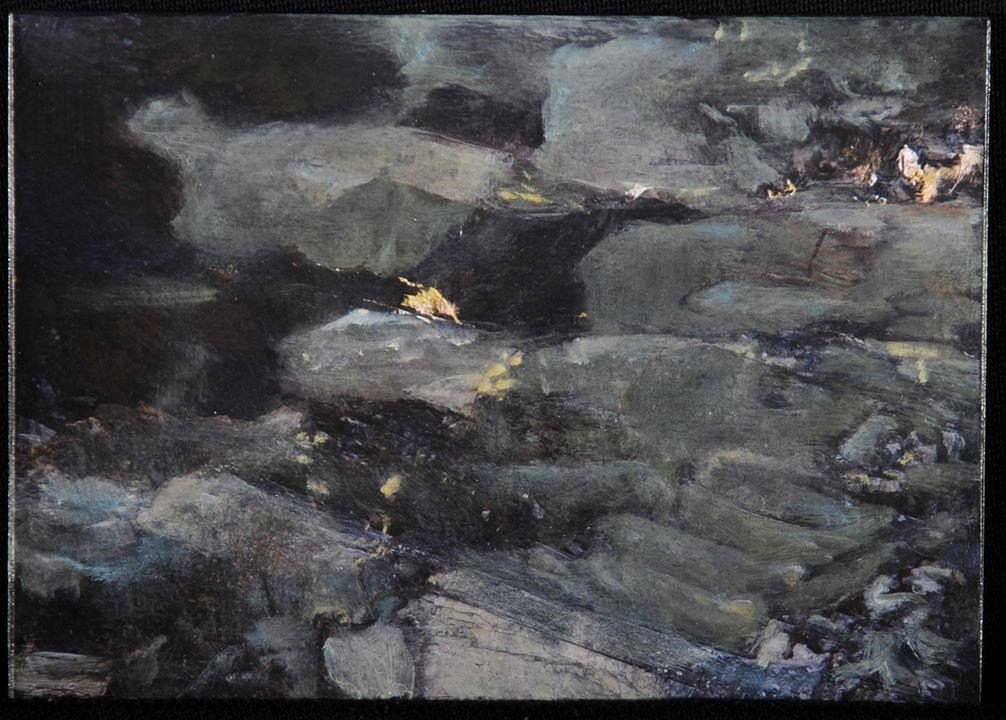
Canyon Series (Marble / Johnston) #12, 2023, photo based mixed media / birch panel, 5x7 inches (13x18 cm), $300.00 Cdn.
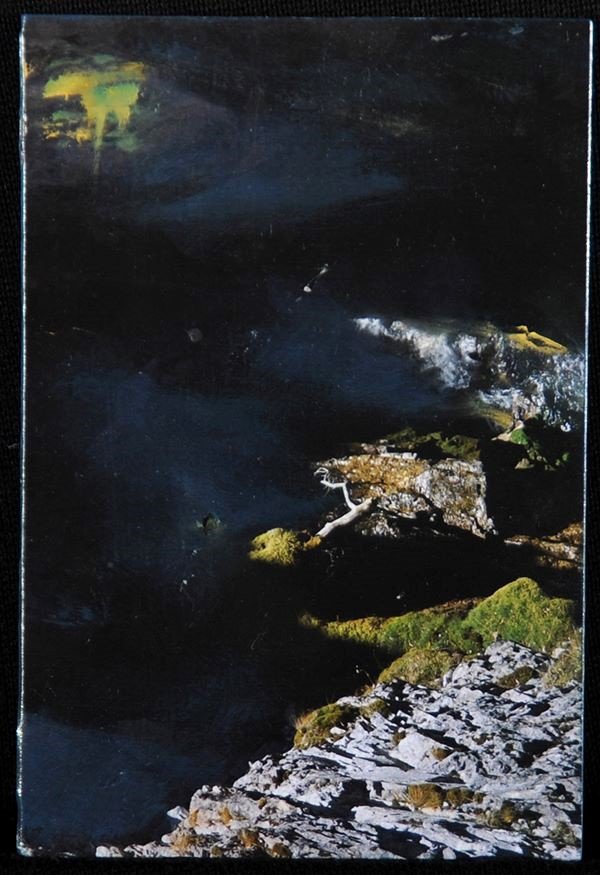
Canyon Series (Marble / Johnston) #19, 2023, photo based mixed media / birch panel, 6x4 inches (15x10 cm), $200.00 Cdn.
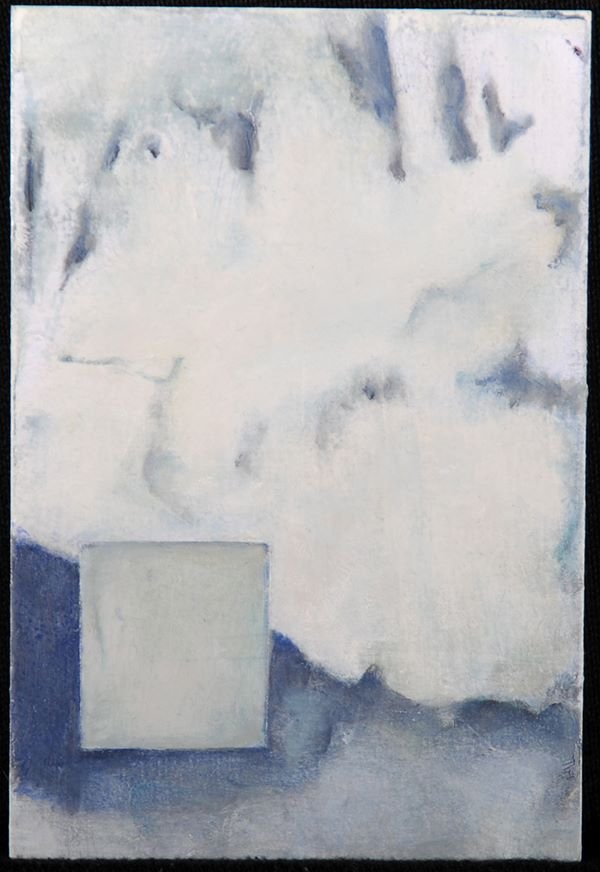
Canyon Series (Marble / Johnston) #22, 2023, photo based mixed media / birch panel, 6x4 inches (15x10 cm), $200.00 Cdn.
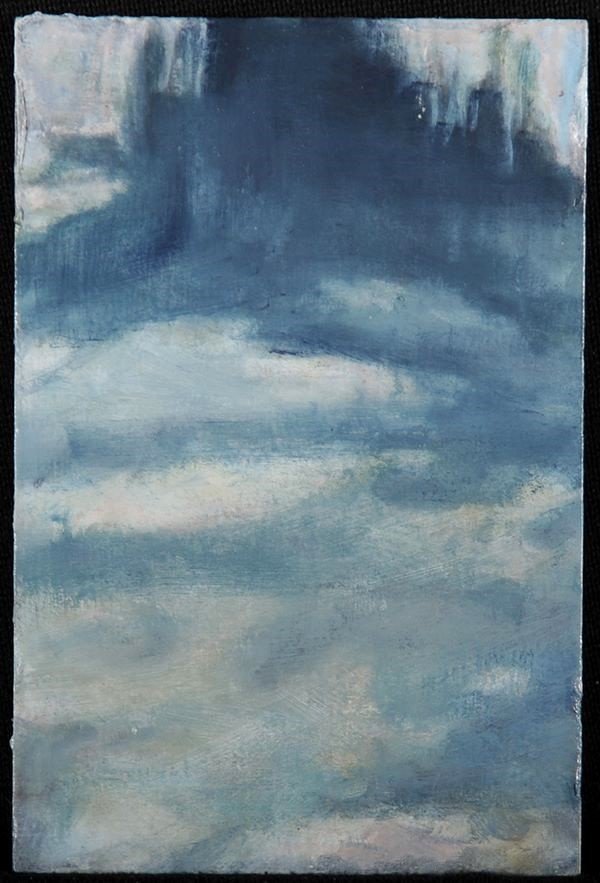
Canyon Series (Marble / Johnston) #17, 2023, photo based mixed media / birch panel, 6x4 inches (15x10 cm), $200.00 Cdn.
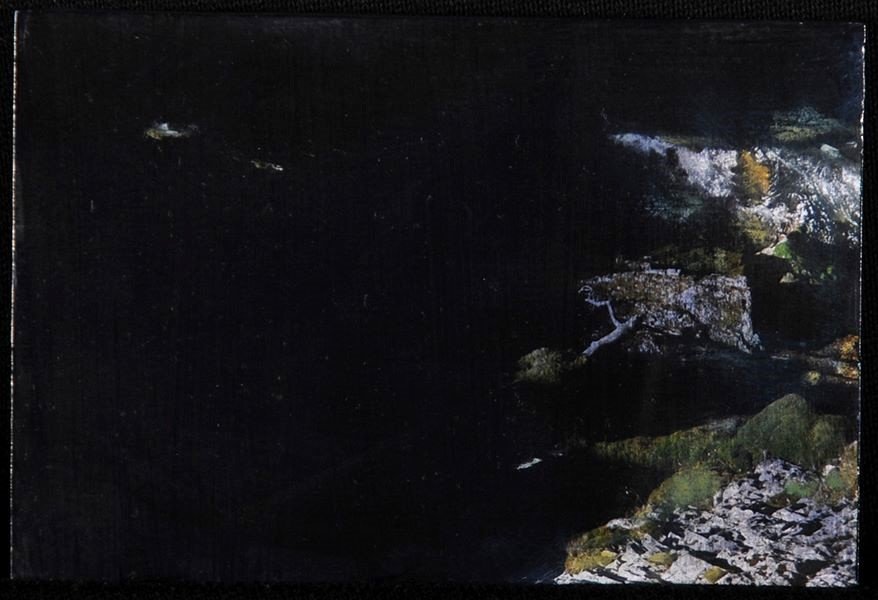
Canyon Series (Marble / Johnston) #20, 2023, photo based mixed media / birch panel, 4x6 inches (10x15 cm), $200.00 Cdn.
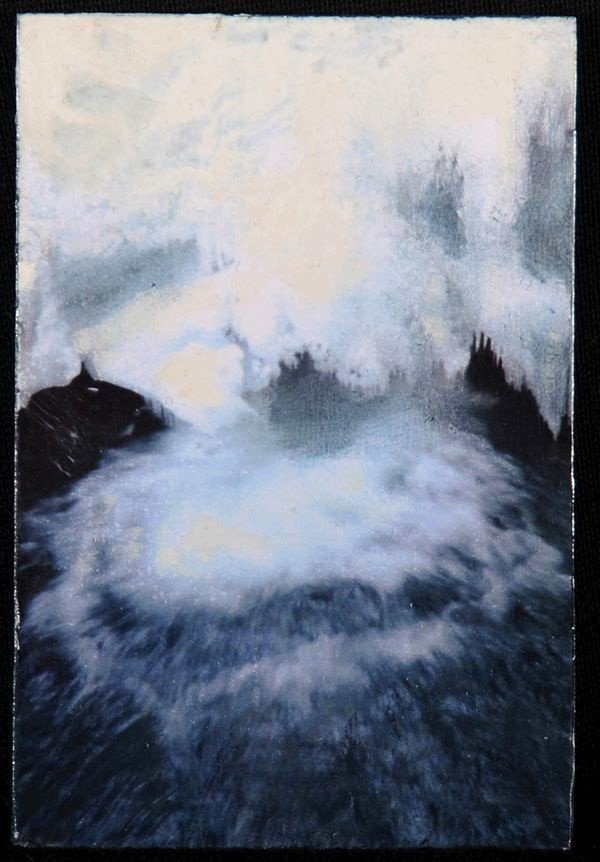
Canyon Series (Marble / Johnston) #16, 2023, photo based mixed media / birch panel, 6x4 inches (15x10 cm), sold.
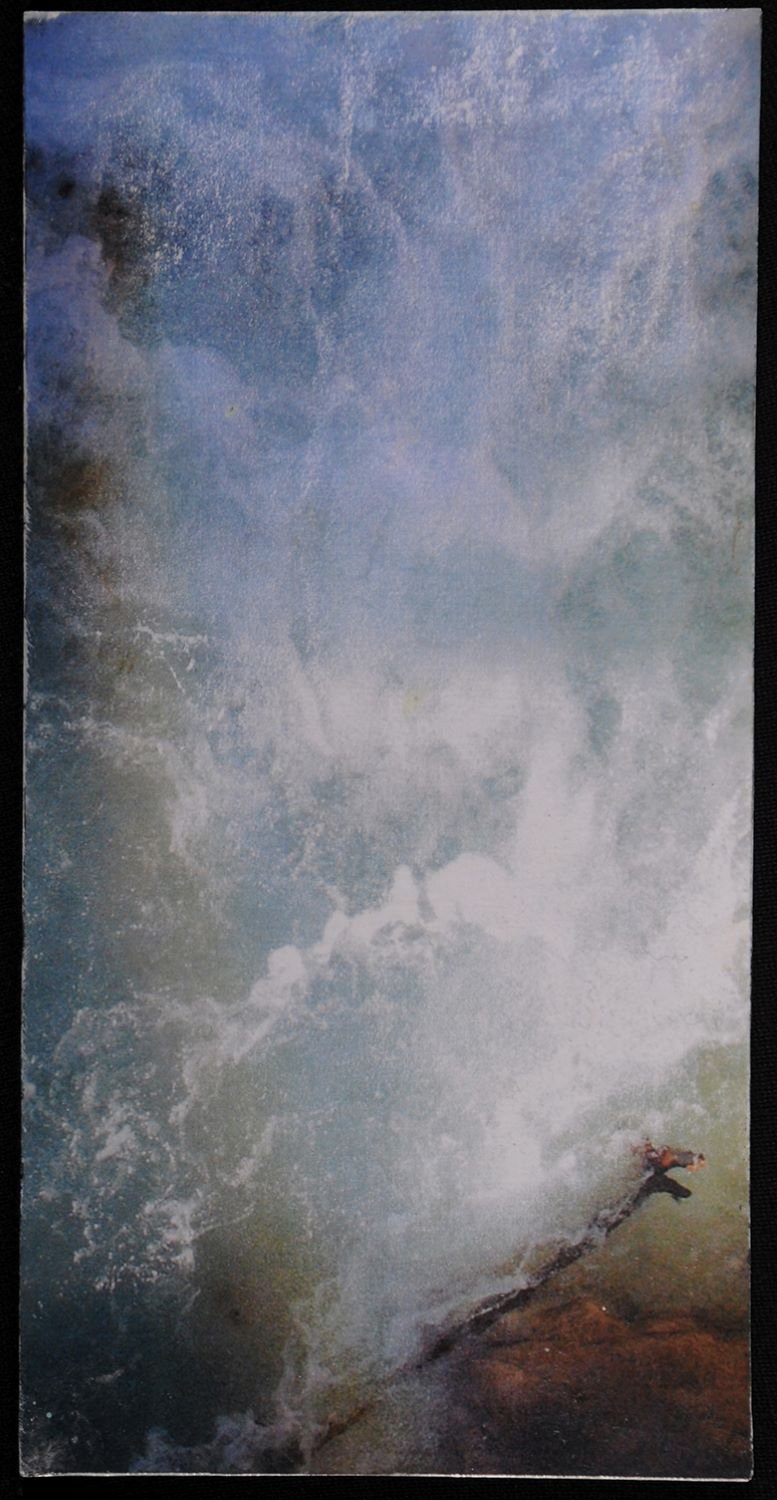
Canyon Series (Marble / Johnston) #9, 2023, photo based mixed media / birch panel, 12x6 inches (30.5 x 15 cm), sold.
“These are paintings, in part, of an enchantment with the mountain landscape that transcends the literal monumentalism of rock. Gorgeous (Myrna Kostash, Dec 2022).”
Working with textile and photography since the 1970s, Linda Craddock now paints with oil. An active member of the Alberta Society of Artists, she has an impressive list of regional, provincial, and national exhibitions including the Canadian Museum of Contemporary Photography, the Glenbow Museum, Medicine Hat College, Visual Arts Alberta Gallery, and the Edmonton Art Gallery (now the Art Gallery of Alberta).
Her work is found in the permanent collections of: The Canadian Museum of Contemporary Photography, Ottawa, ON.; The Art Gallery of Alberta, Edmonton, AB.; The Alberta Foundation for the Arts; Alberta Culture (Edmonton Law Courts); Pro Arts Society, Calgary; Cantos Music Foundation, University of Calgary, and numerous private collections in Canada, the United States, and Europe.
Education:
1988 - Master of Fine Arts, University of Calgary: Photography
1982 - Bachelor of Fine Arts, University of Calgary: Photography/Drawing
1974 - Art Diploma, Alberta College of Art: Textiles
I spend weeks planning each painting. I choose a location and then I ponder.
I transcend the everyday to explore this inner world of time passing and people returning. It has always been this way for me. Maybe I want only to rise above the confusion of my dyslexic brain and the drama and trauma life brings. It is no easy task, to transcend, unless I want it to be.
